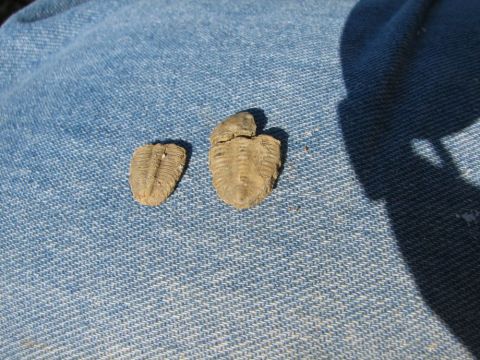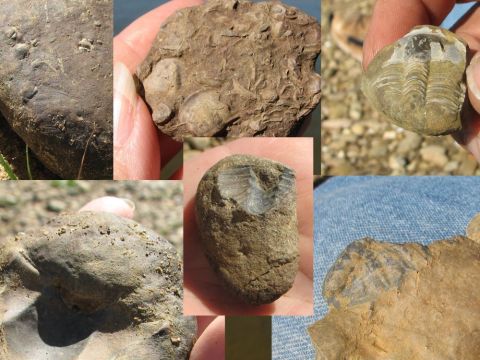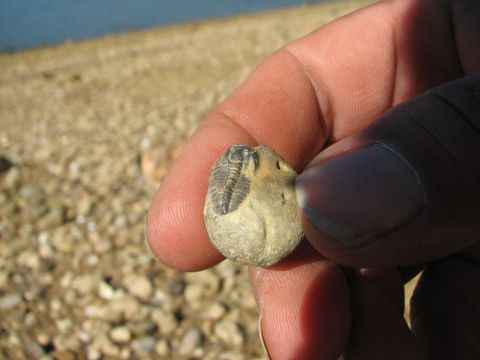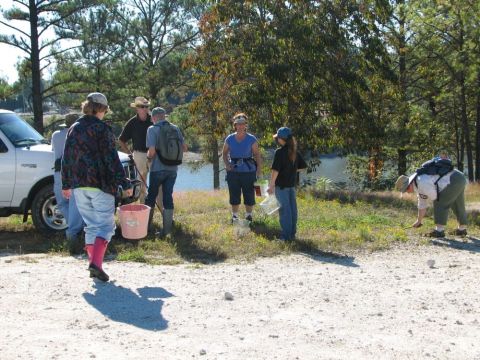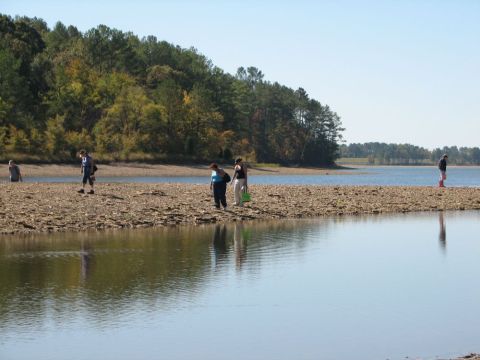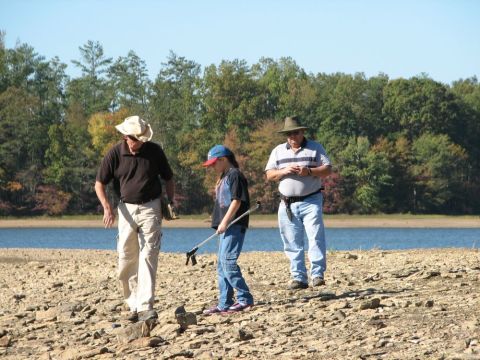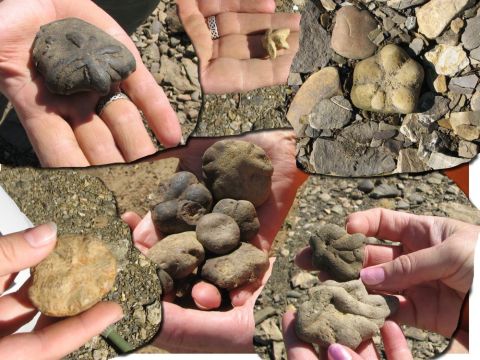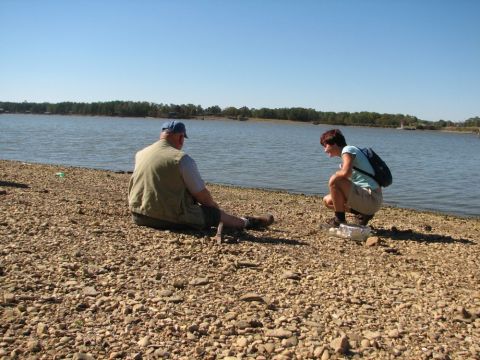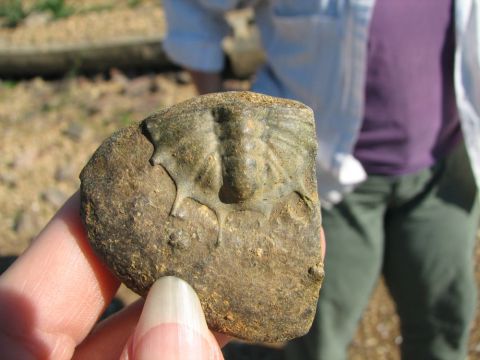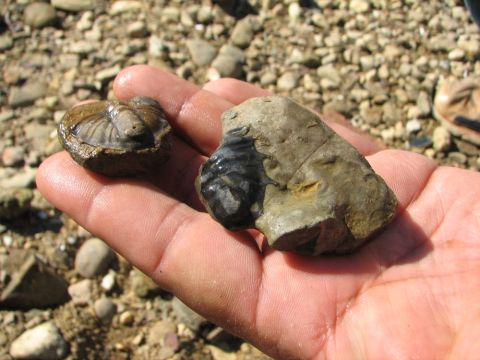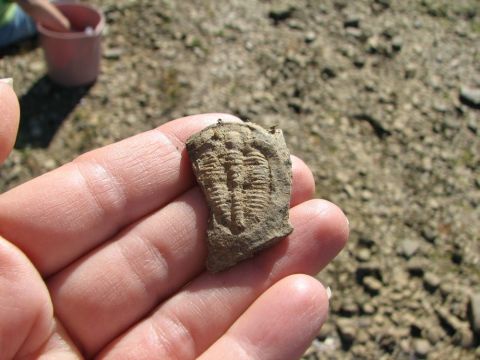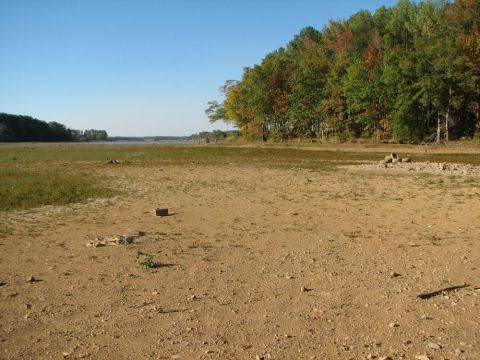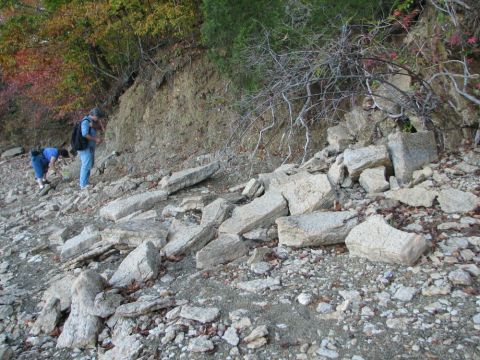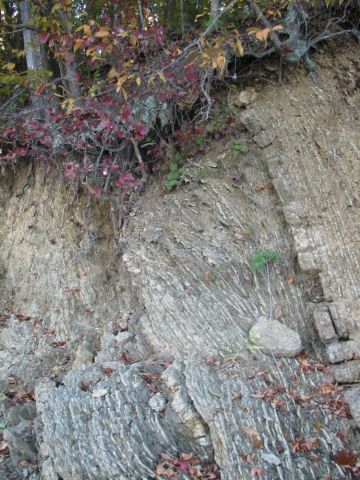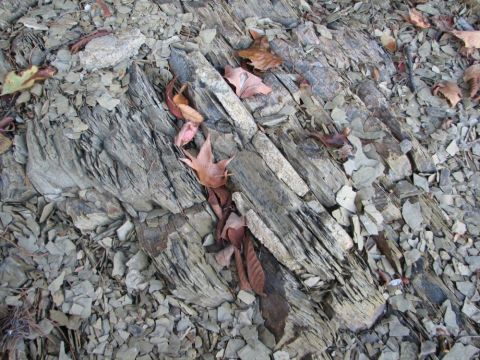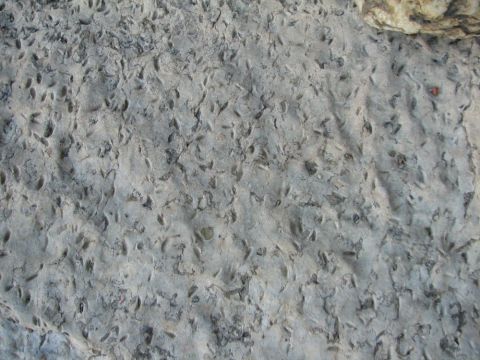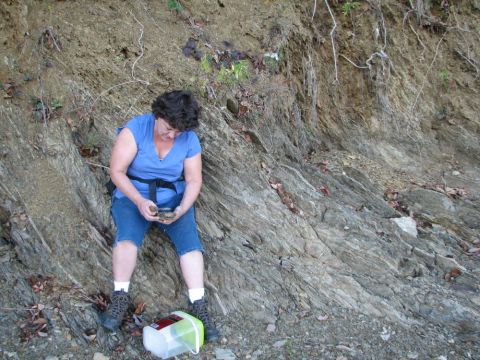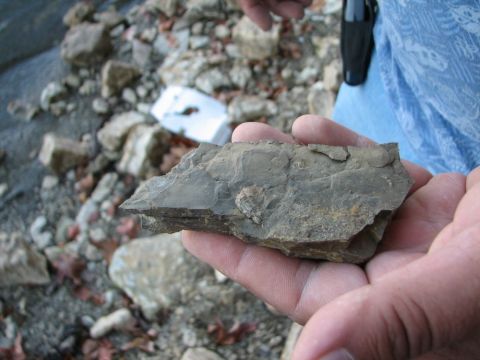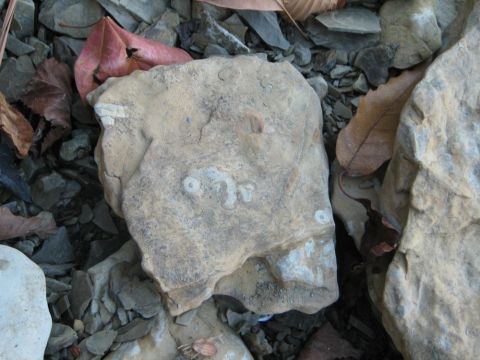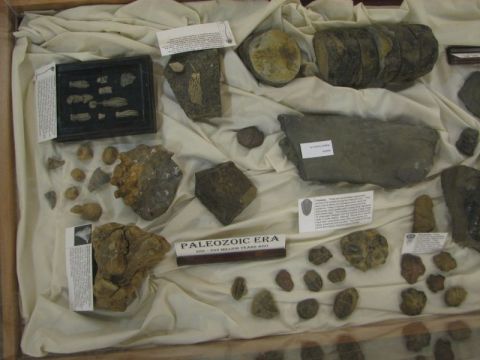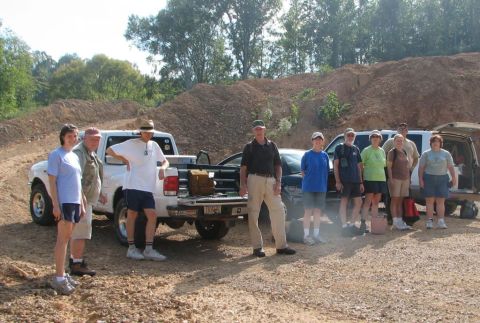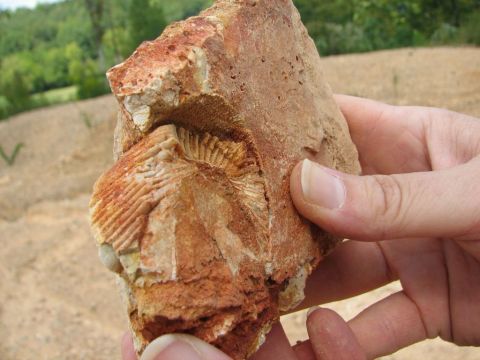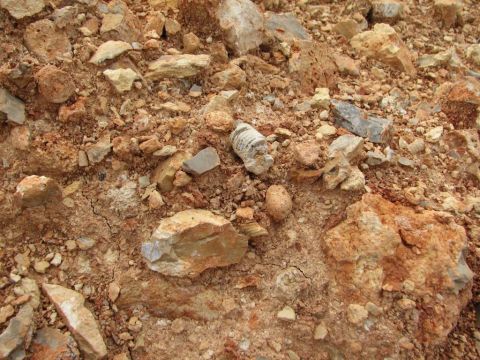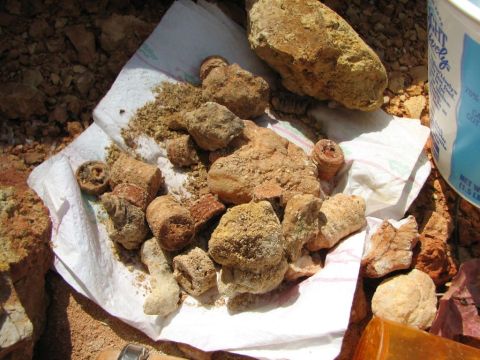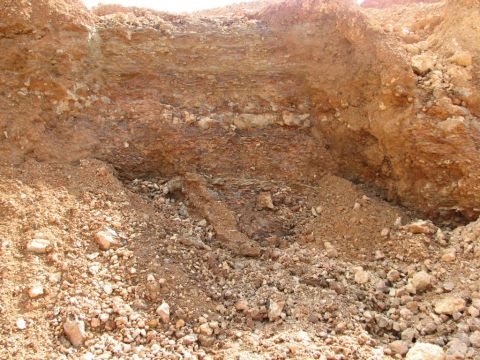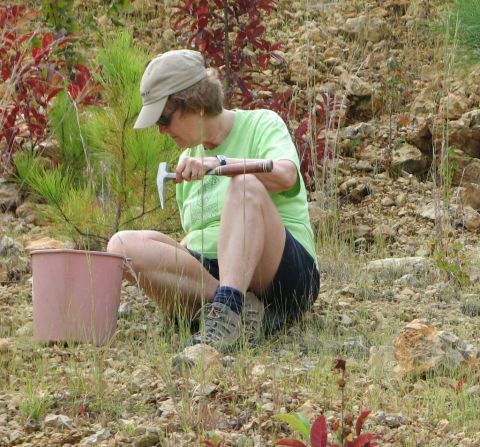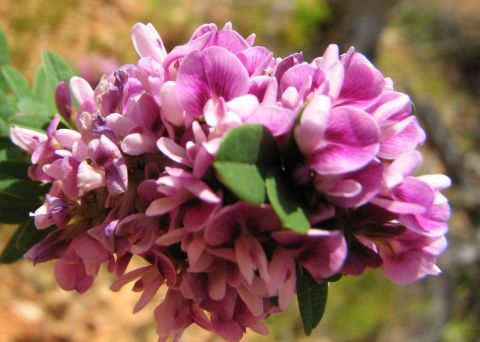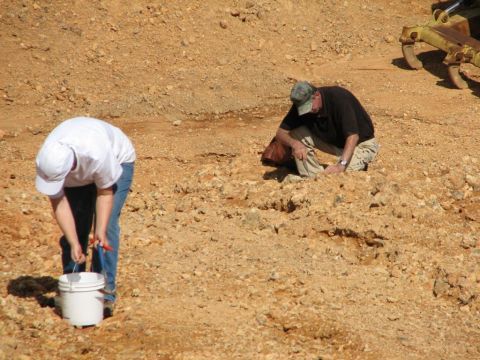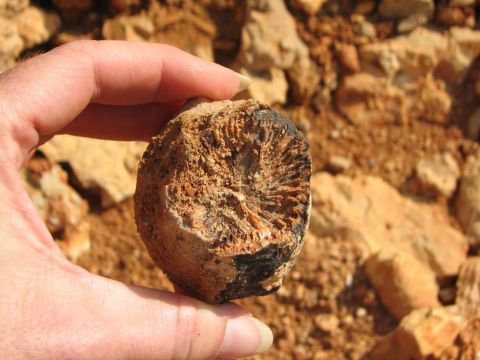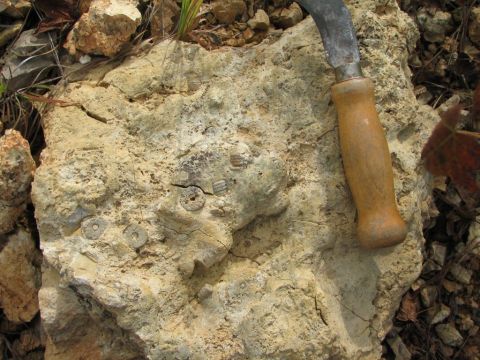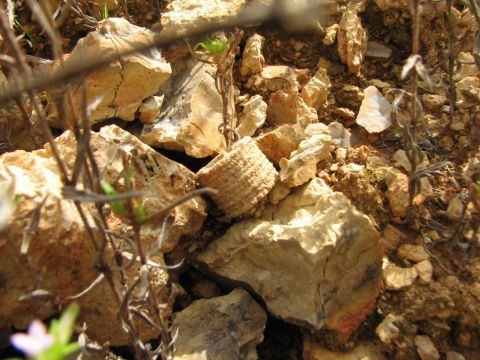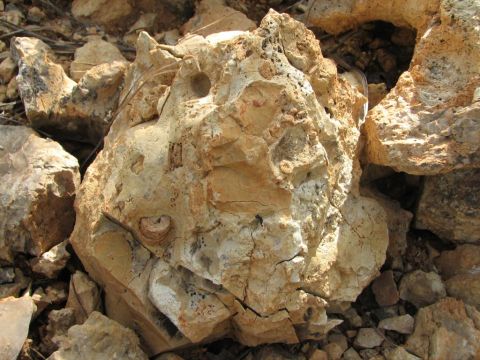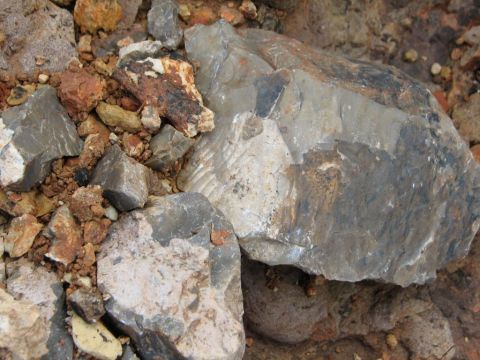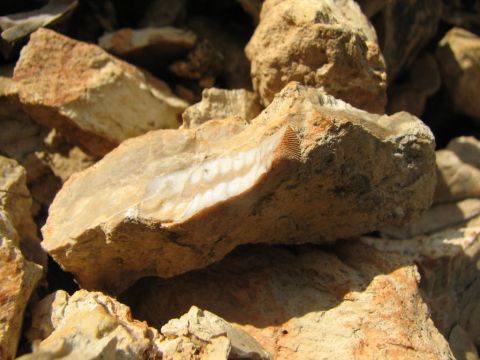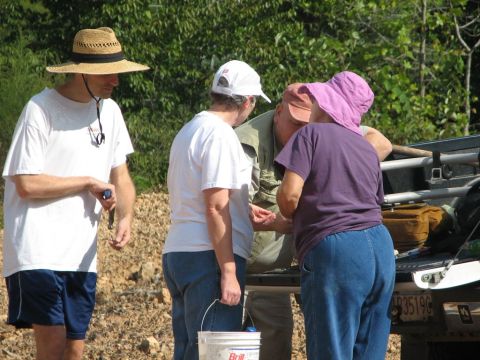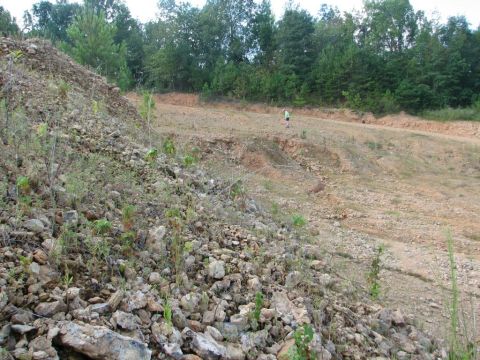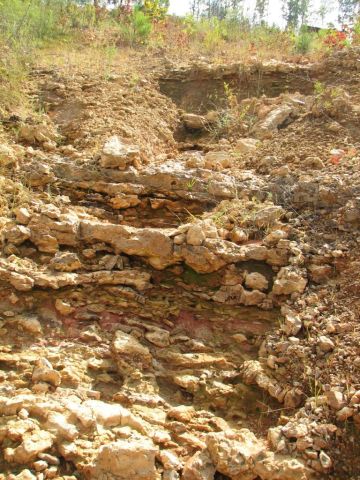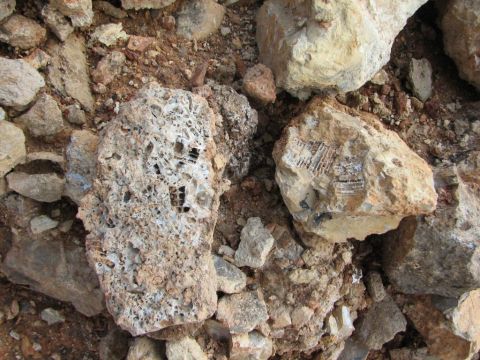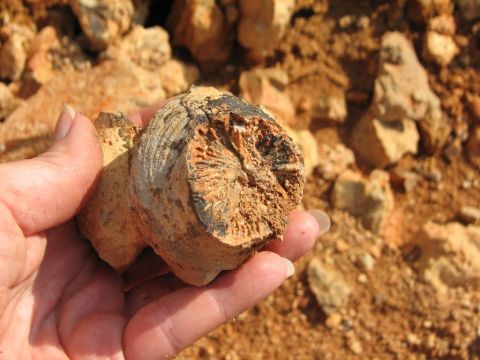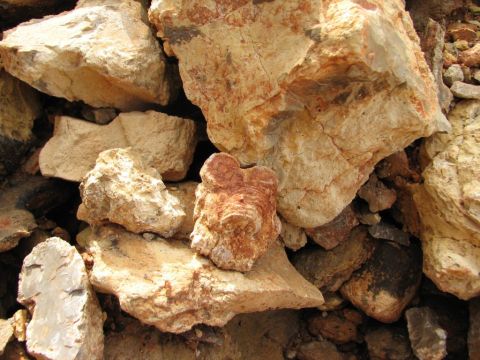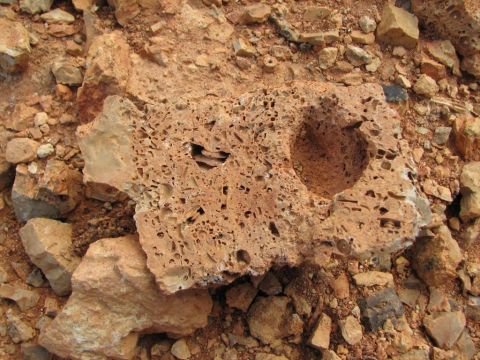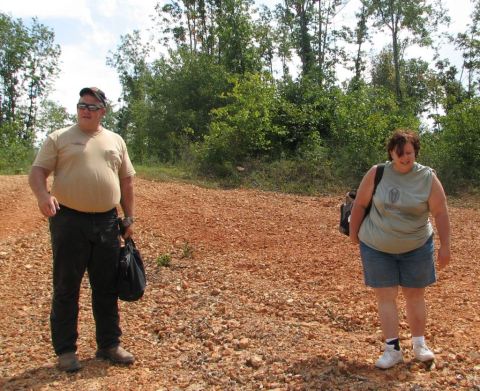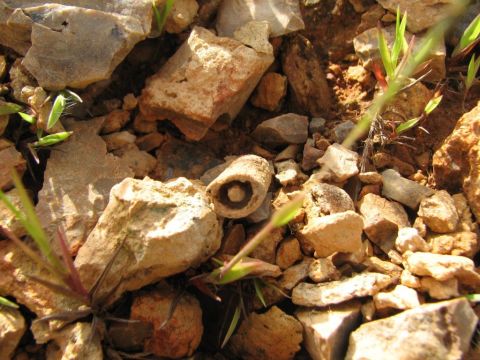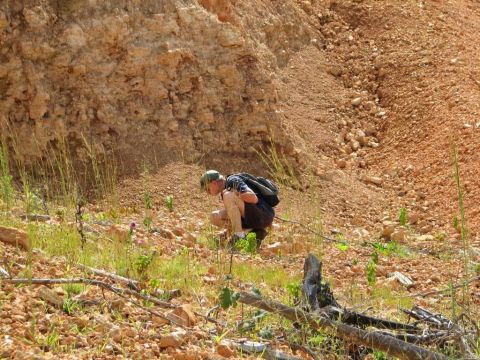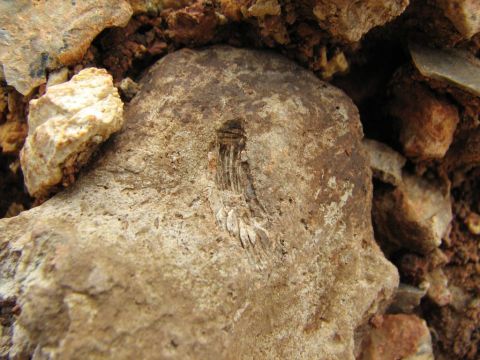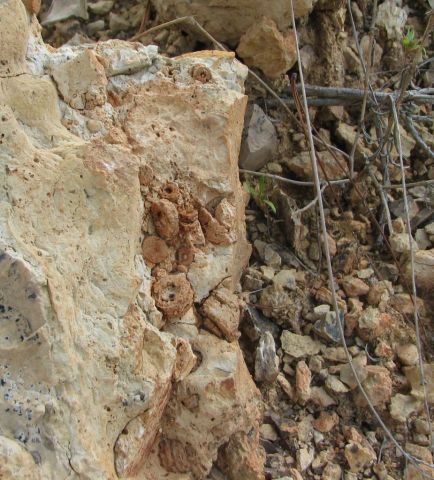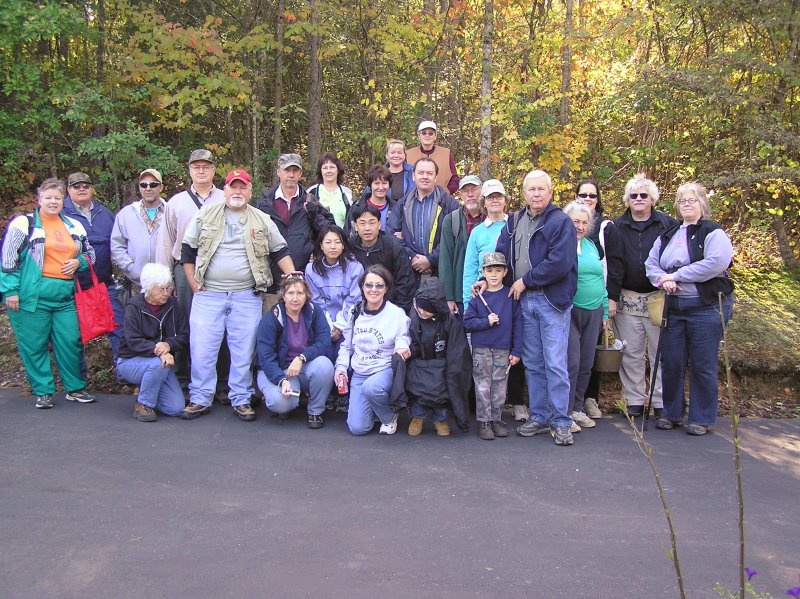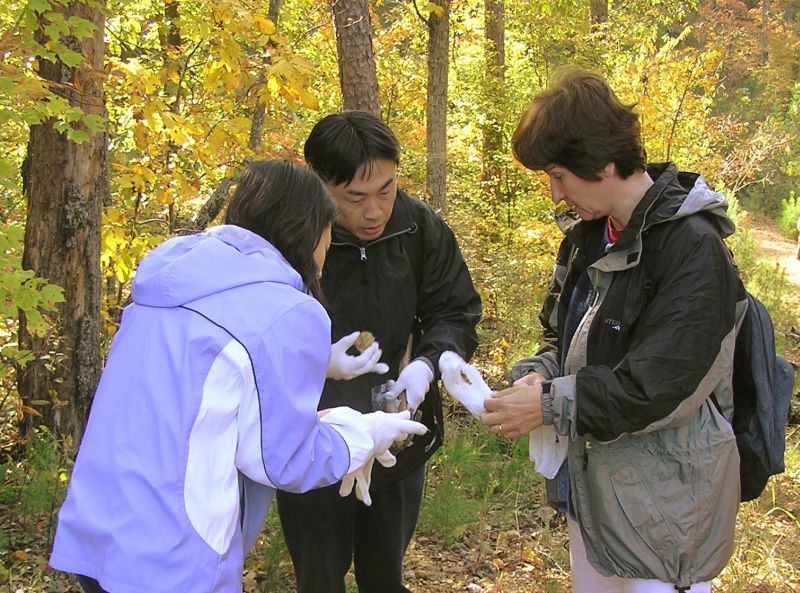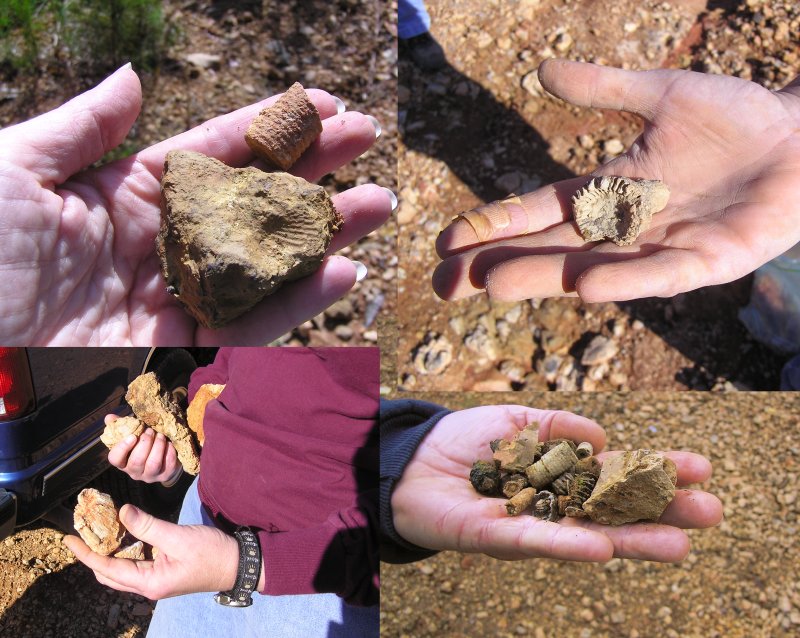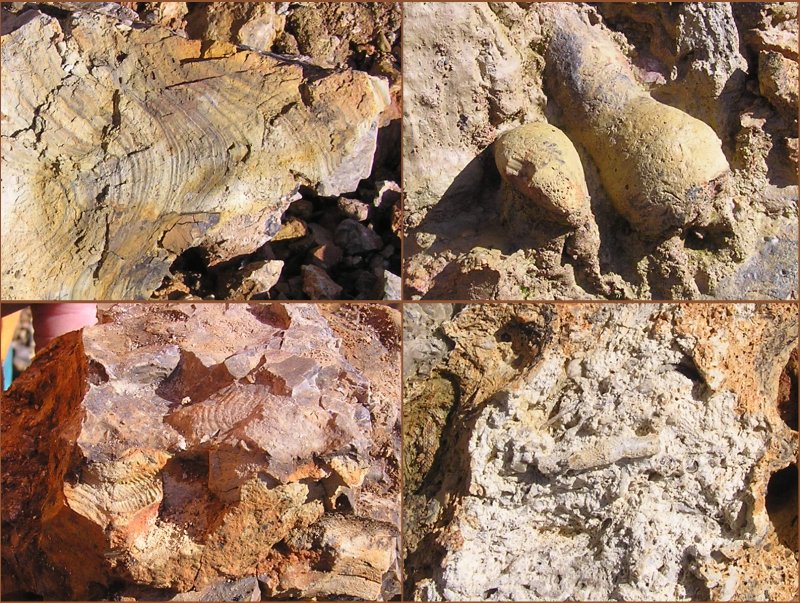Closest to a group photo we have for this trip.
Visitor
trilobite
October 21, 2007 - Cambrian Fossils, Cherokee Co, AL
The current drought brought us to a favourite site in the Conasauga formation in Cherokee County, hoping that low water levels would have exposed more finds. Unfortunately, it proved to be a double-edge sword in that, while more shoreline was exposed, with the lack of water washing the rocks, the trilobite pickin's were slim, indeed. However, our first stop was at a Dresdachian stage site which produced a bumper crop of brooksella, so, win some, lose some. Stop 2 was an Albertan stage site where a few really nice trilobite finds kind of made up for the scarcity. All enjoyed the nice weather and the halloween cupcakes. We had fun welcoming young Liz to the club. She found some fossils, dug up some clay and practiced her rock-skipping skills and had a ball. We finished up at a favourite restaurant where some of the best fried green tomatoes in Alabama can be found. Yum.
After the main trip, three members scouted a couple of potential new sites. The first site was totally non-productive, while the second site had a large outcropping of shale, where a few tiny trilobites were found.
--Photos courtesy Vicki Lais
Shoreline at stop number two where a few of us scouted for fossils, water is well below winter levels.
Interesting marks like these sometimes cover entire boulders in the area, probably attachment marks made by a snail-like creature. Probably recent, but in several million years they will be considered fossils.
- ‹ previous
- 8 of 9
- next ›
September 22, 2007 - Mississipian Fossils, Blount Co, AL
A trip to a quarry in the Mississippian age, Fort Payne chert was on the schedule for BPS' field trip in September. It was a beautiful day with a good turnout. THe quarry had been dug out since out last visit so we were able to look around the freshly-exposed areas. Sylvie and Michael made a heroic effort to find a trilobite in some of the material that resembled Frog Mtn. formation, but to no avail. We wandered freely over the huge quarry area, finding crinoid stems, brachiopods, corals and a number of nice geodes. The chert is lightweight and filled with cavities, leaving behind molds of long-ago crinoids.
Lunch break at the Top Hat Barbecue gave us a chance to cool off a little, since the heat was pretty intense. However, the troops headed back to the quarry after lunch for a full afternoon of collecting.
--Photos courtesy Vicki Lais
- ‹ previous
- 8 of 9
- next ›
January 13-14, 2007 - Cambrian Fossils, Cherokee Co, AL
Stop 1 was a late Cambrian site, Dresdachian stage, (515 MYA) which yielded a number of Brooksella.
Stop 2 was in the Albertan stage approx 530MYA. Thanks to Capt. Steve, a short boat trip to the collecting site yielded some good specimens of trilobites which appear to be Kingstonia, Densonella, Norwoodella, and Cossella.
The evening of the first day was spent at a local Seafood house followed by a delightful evening spent at a cabin rented by BPS. We celebrated Jan and Lea Novaks birthdays; Lea baked her own cake, a Czech trilobite cake, which was great. This was followed by much good drink, a spirited backgammon game, Pro football on the big screen TV (yes we were roughing it), more good drink, talk and blues on the radio.
Day 2 was another warm day for January starting with a good and inexpensive breakfast at the local fish camp. There was more fossil hunting on the local beach followed by several hours of splitting shale on another beach which was also fruitful. Later in the afternoon, a number of members decided to scout some new sites which we were told about by a local fossil hunter we met at our first stop.
(Photos courtesy Bill Fowler, Steve Corvin, and Vicki Lais)
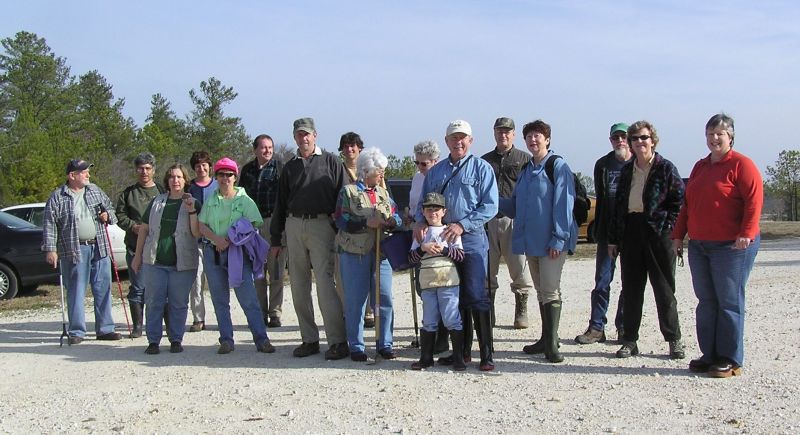
Everyone is anticipating a great day of collecting!
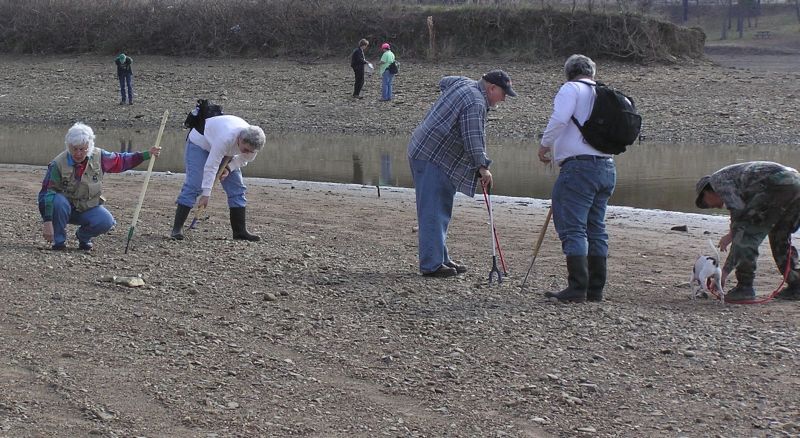
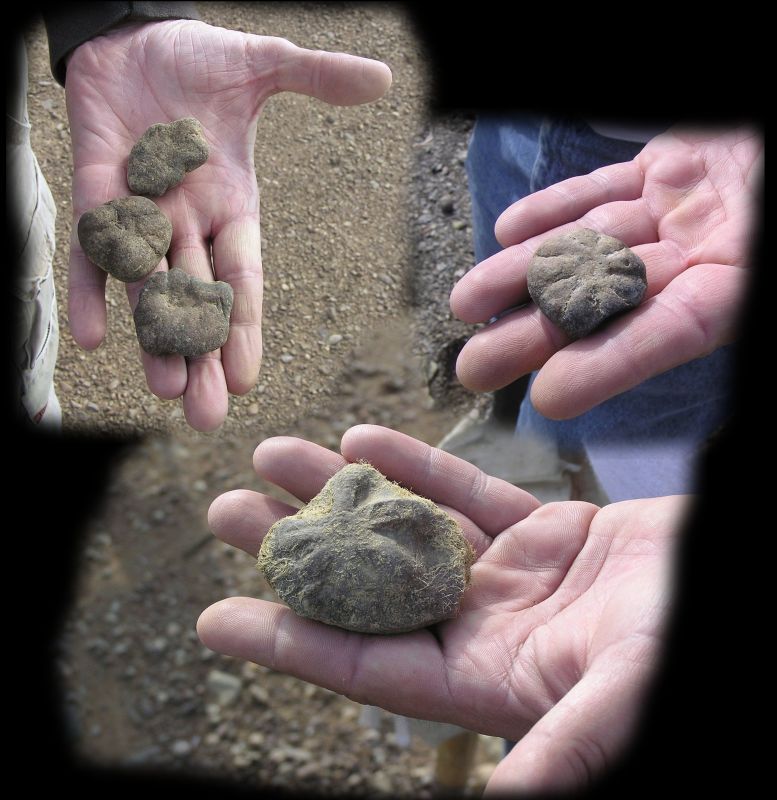
Samples of the nice brooksellas that were found.
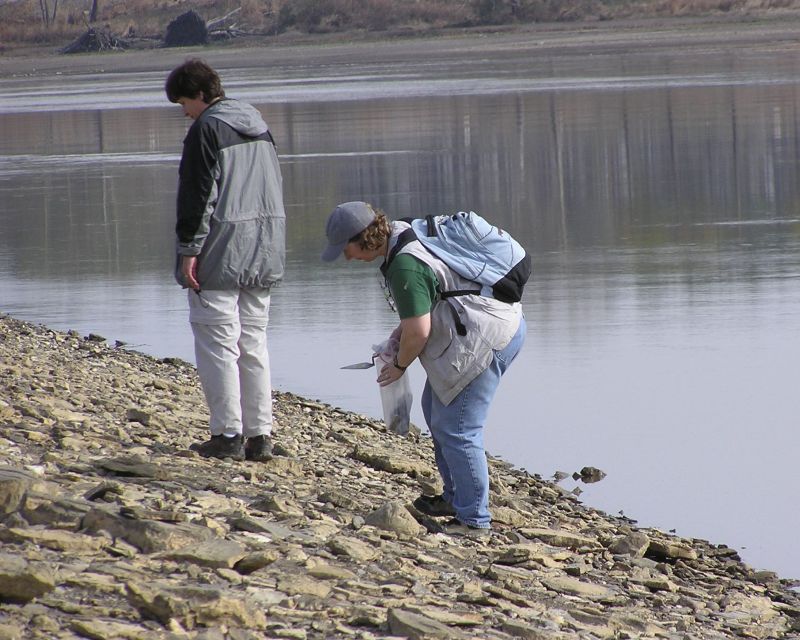
Lea and Claire surveying the area.
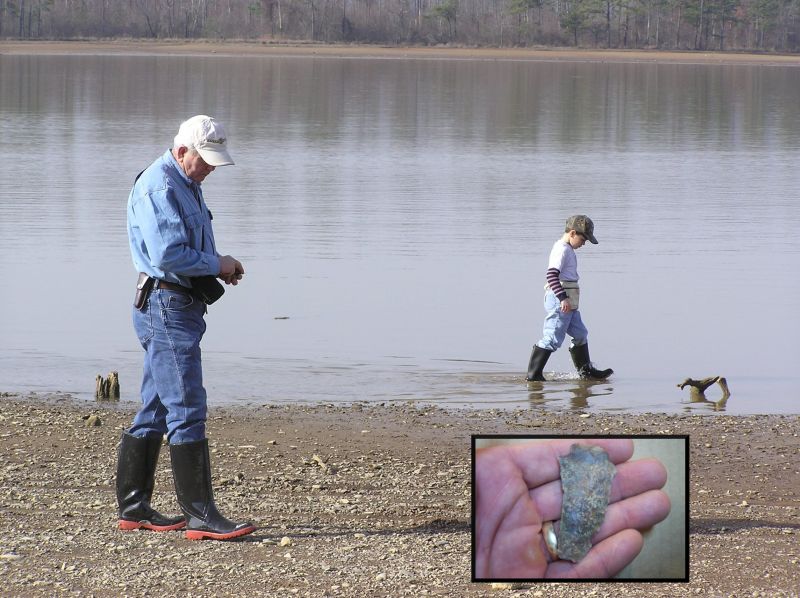
Steve found a nice point in the area.
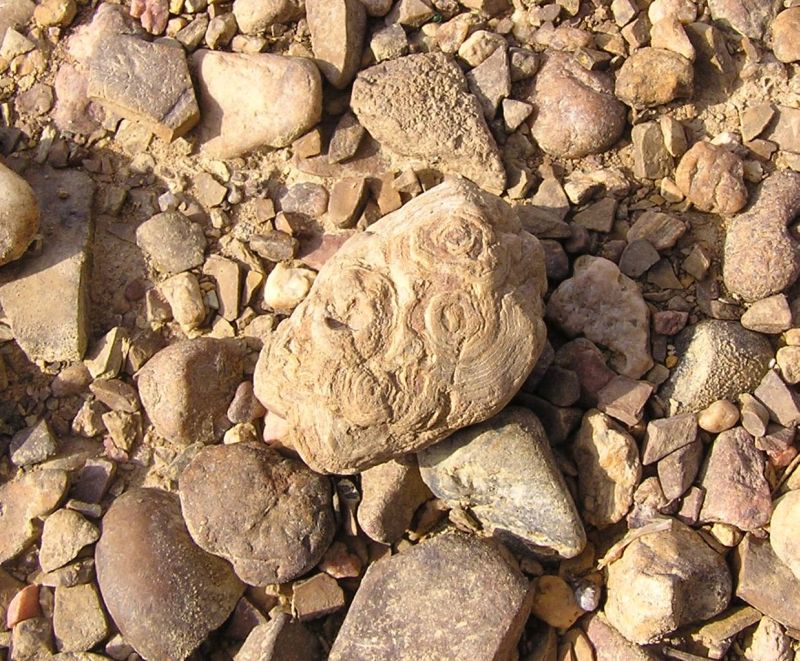
Nice stromatolite found by Vicki.
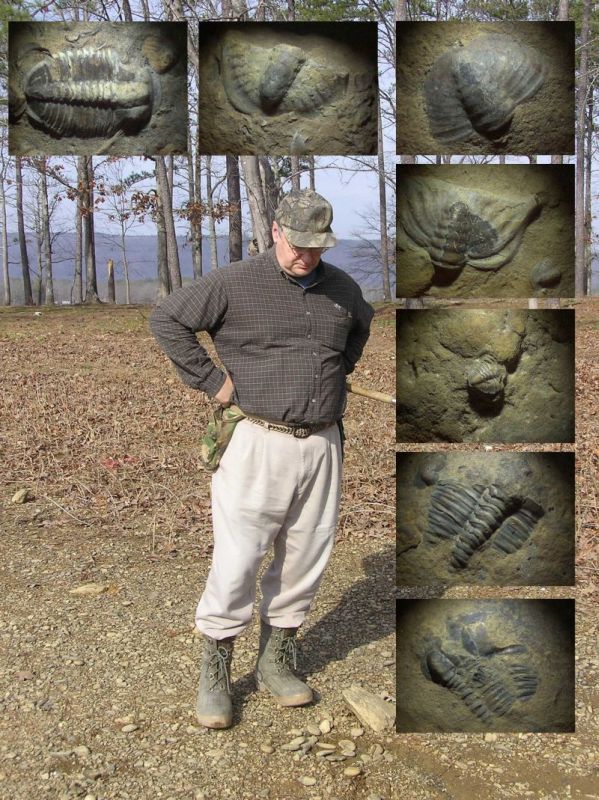
Bill and some of his small trilobite finds under the microscope. Click photo (then click photo) for larger image.
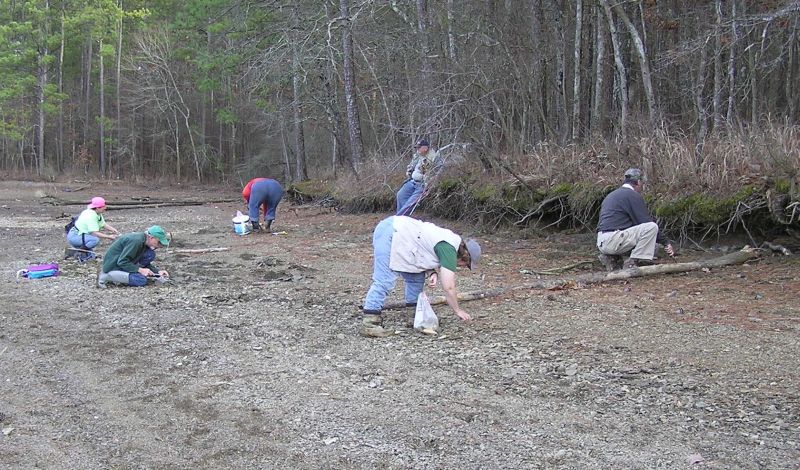
The next site required a short boat trip. The shoreline in this area is composed of deteriorated Conasauga shale.
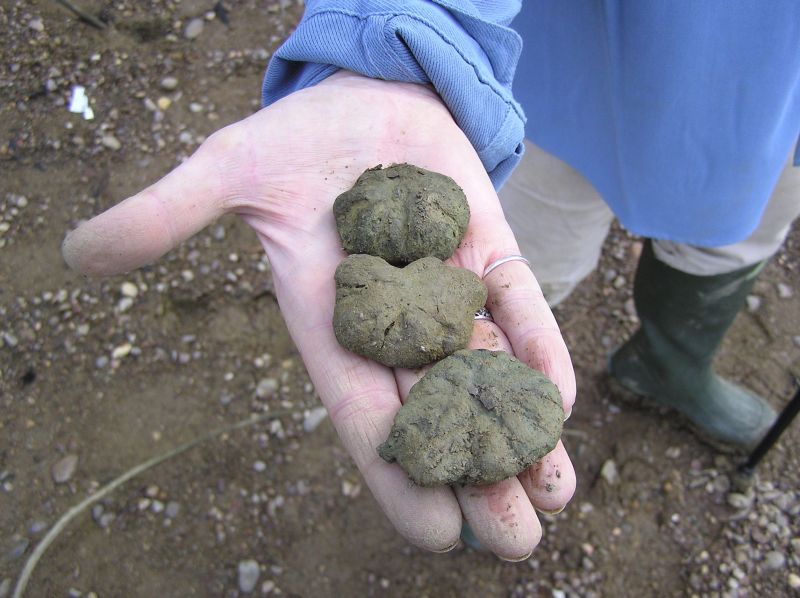
Nancy found some nice (but decidedly muddy!) brooksella.
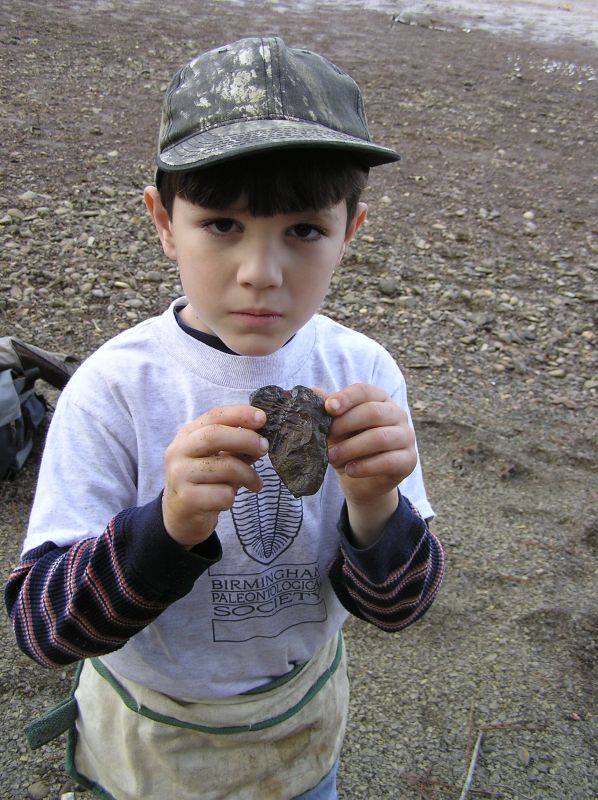
Steven with his trilobite find.
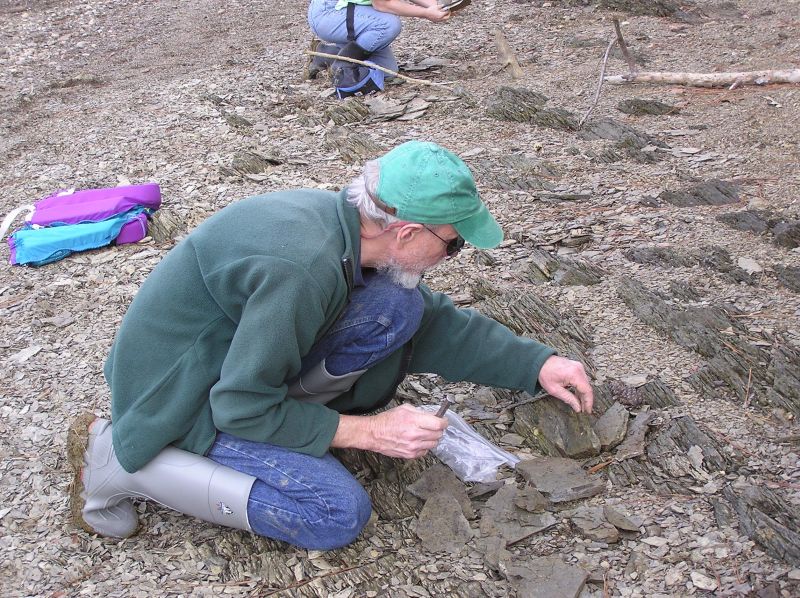
Searching for trilobites in the broken shale.
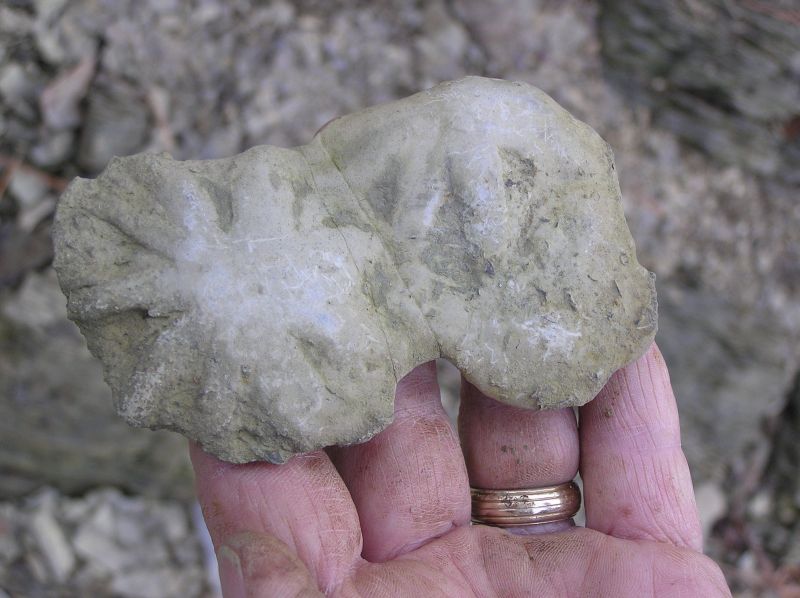
Bob found a double brooksella.
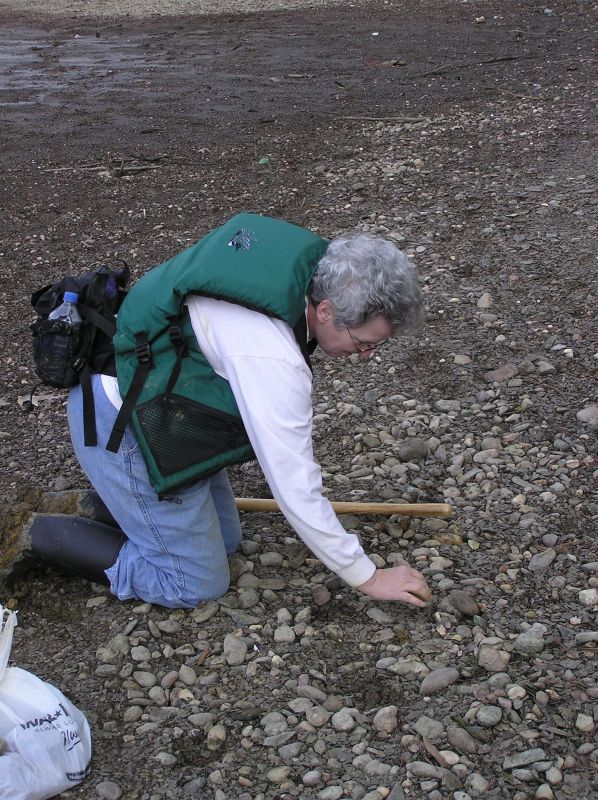
We learned the meaning of "don't leave any rock unturned" today . . .
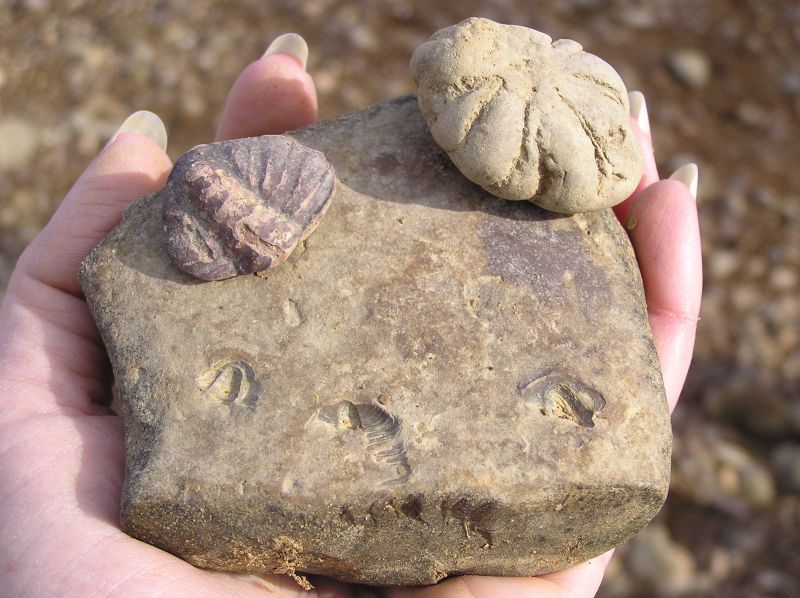
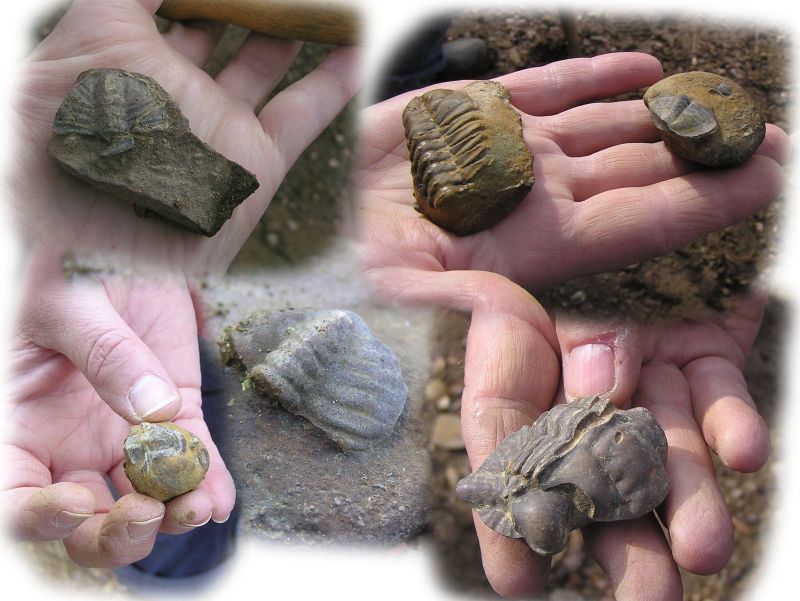
Samples of what was found on day 1.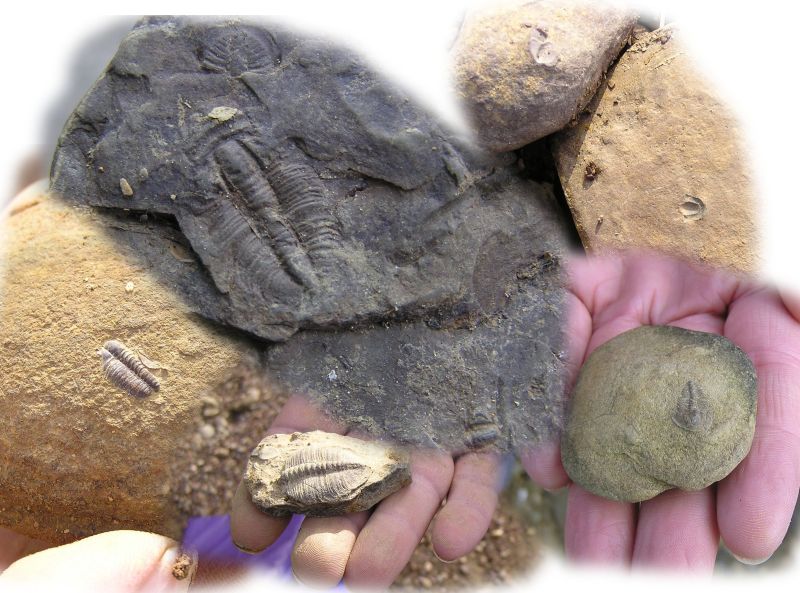
More trilobite specimens from day 1.
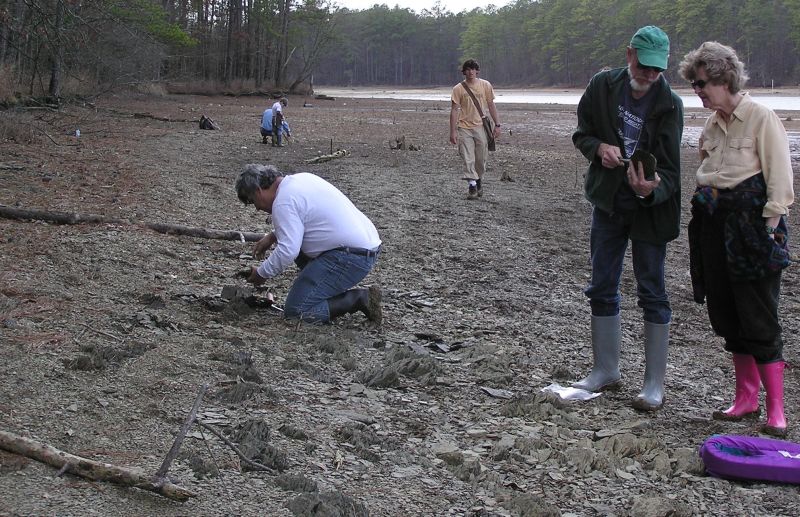
People were scattered all up and down the shoreline.
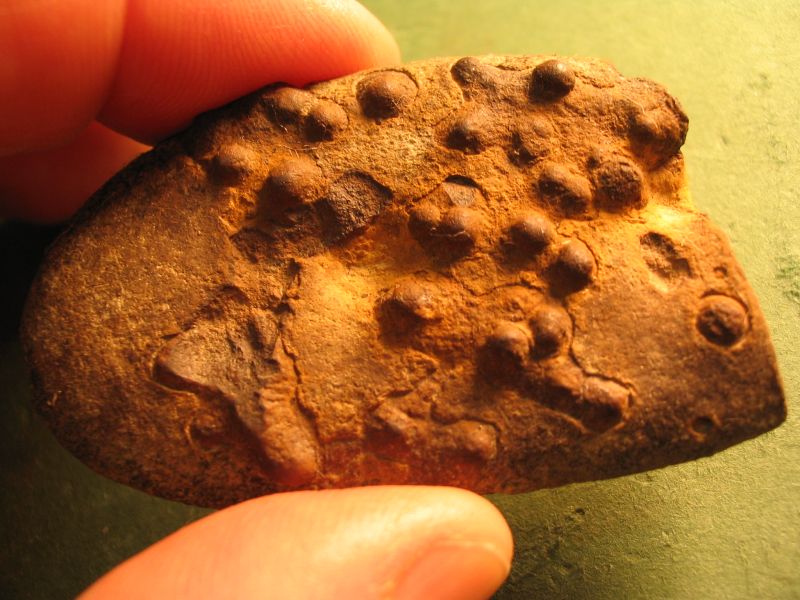
Another find by Bill, shown under the microscope.
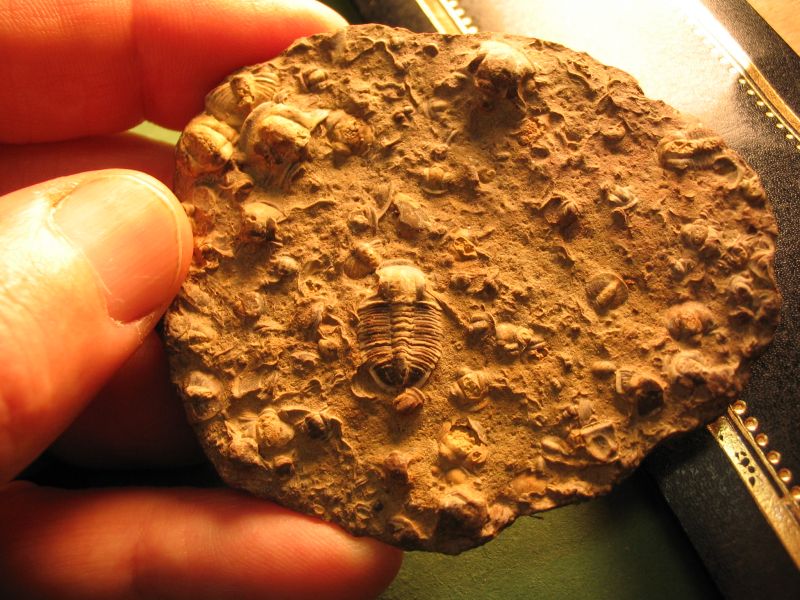
A pebble filled with small trilobites, found by Bill.
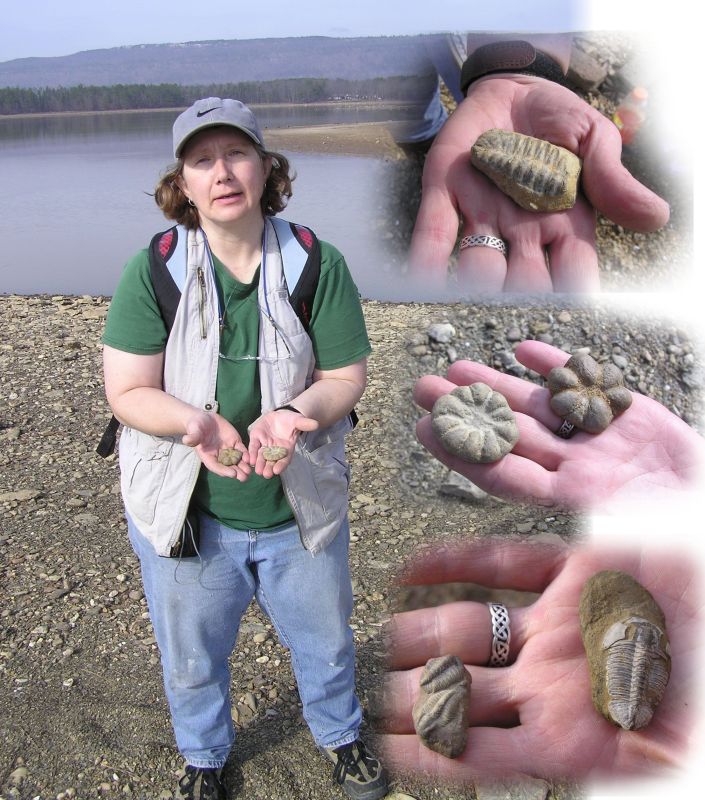
Claire and her best finds of the day - very nice brooksella and trilobites.
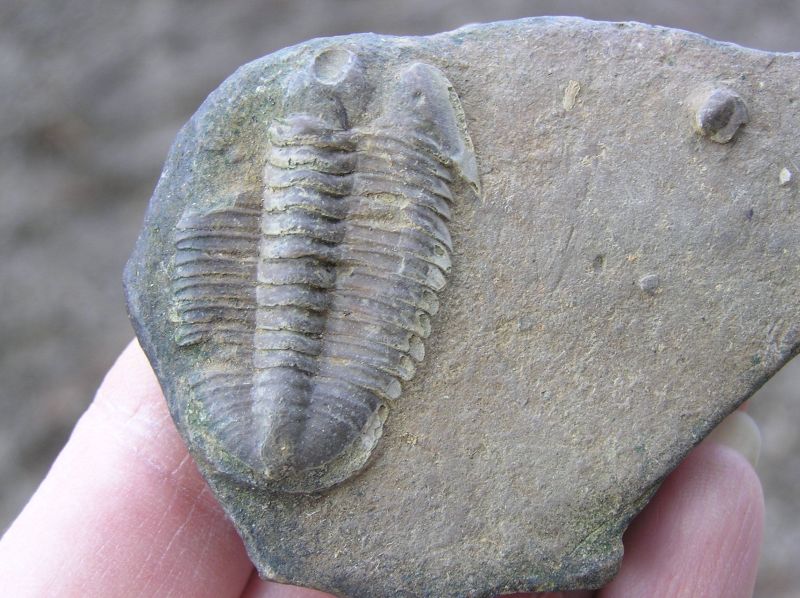
Very nice trilobite found by Bobby.
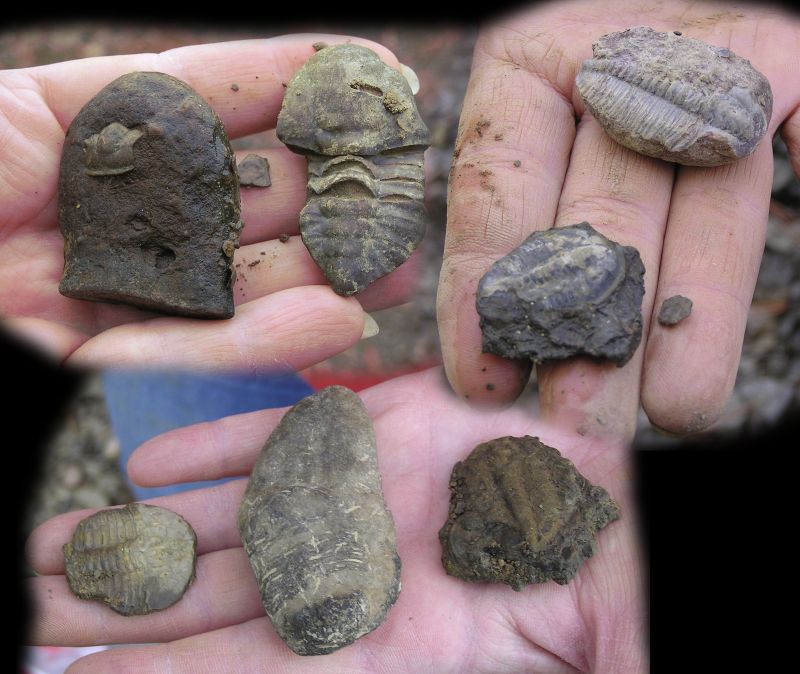
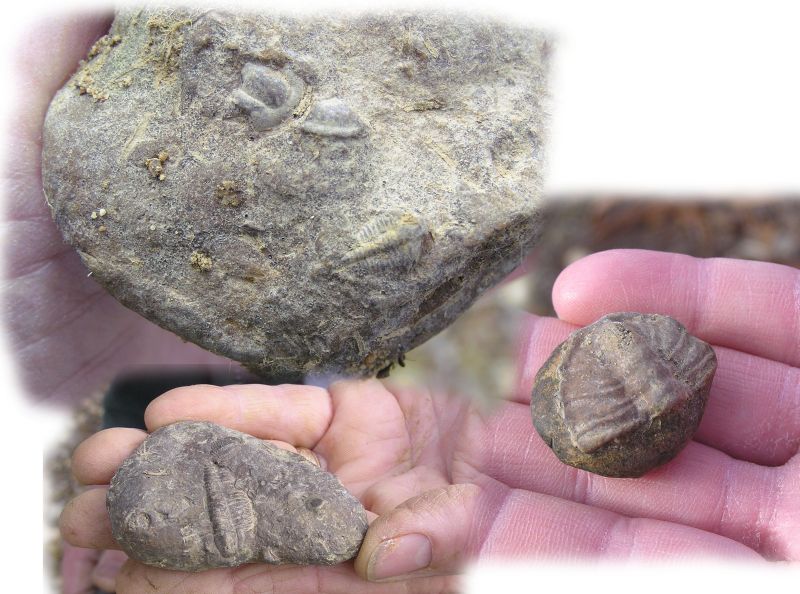
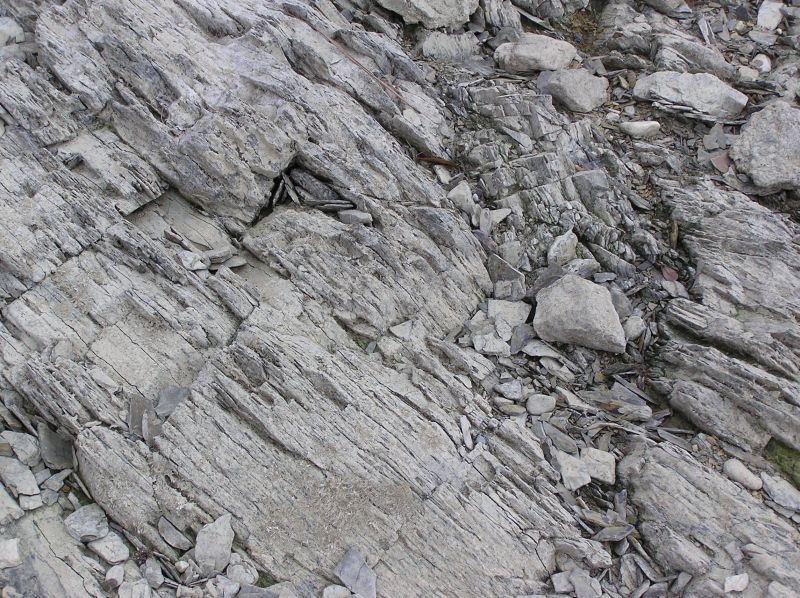
On day 2 we collected at a different site. Large outcrops of Conasauga shale turned on edge held numerous trilobites.
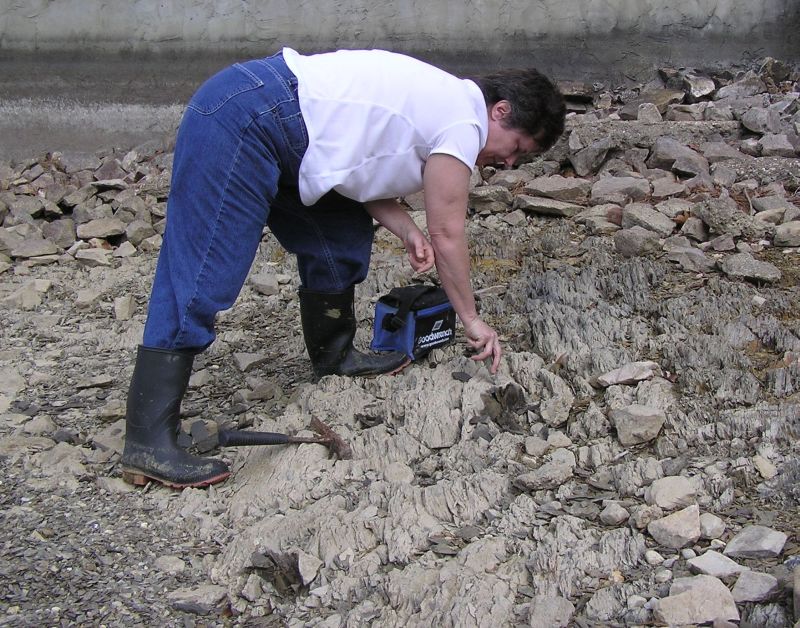
Becky is extracting small hunks of the shale to carefully split apart.
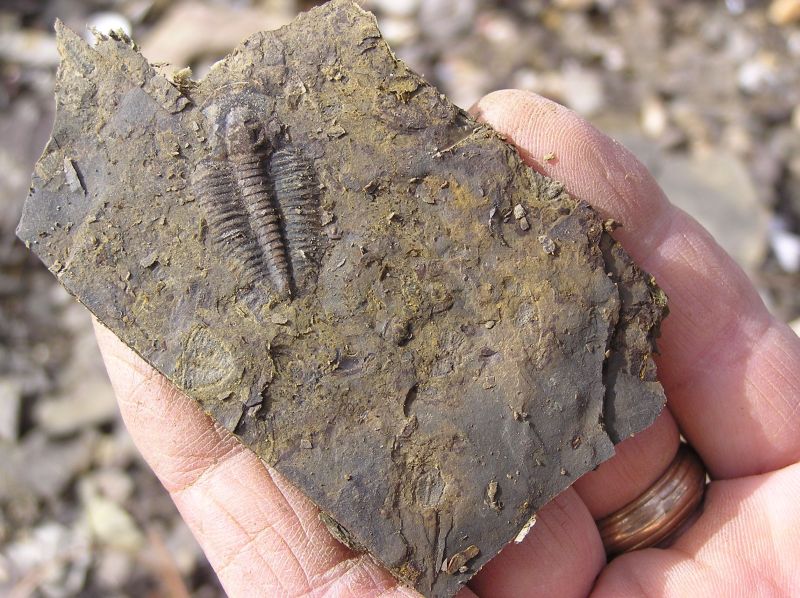
Nice trilobite specimen found at this site, found by Pam and Bob.
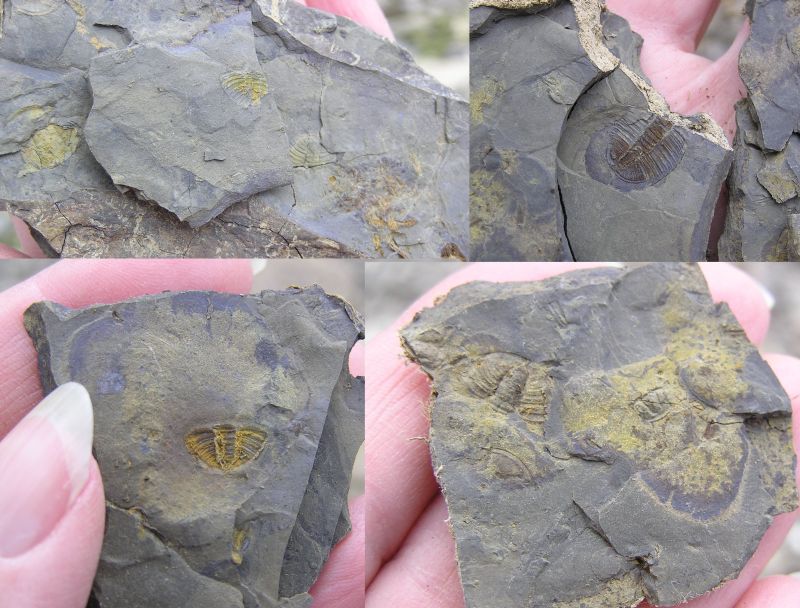
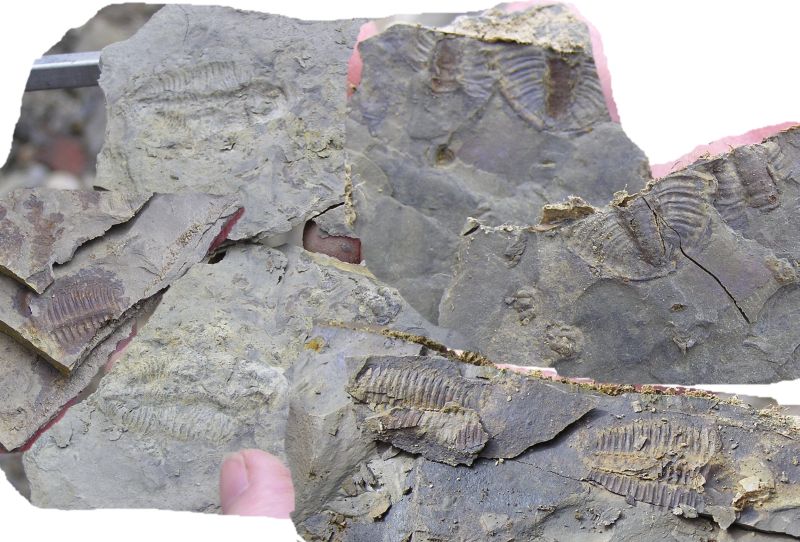
Leisa was having very good luck splitting the shale.
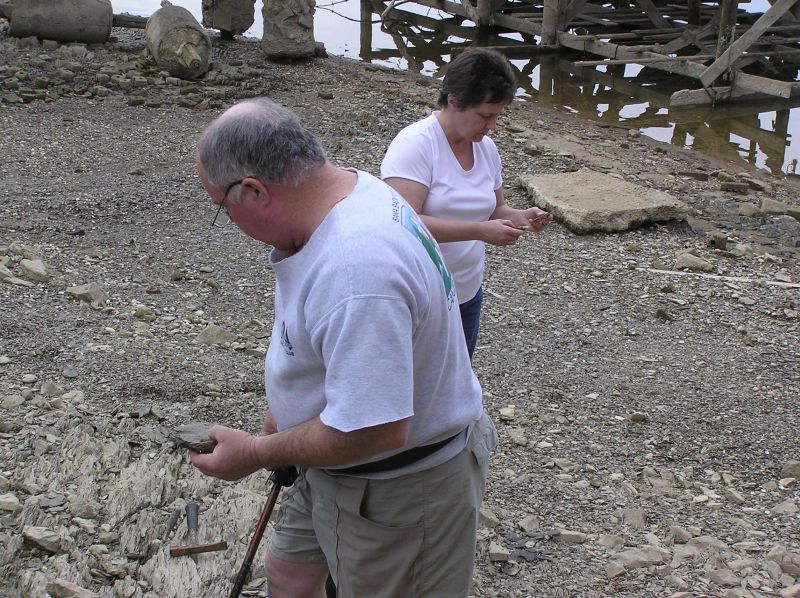
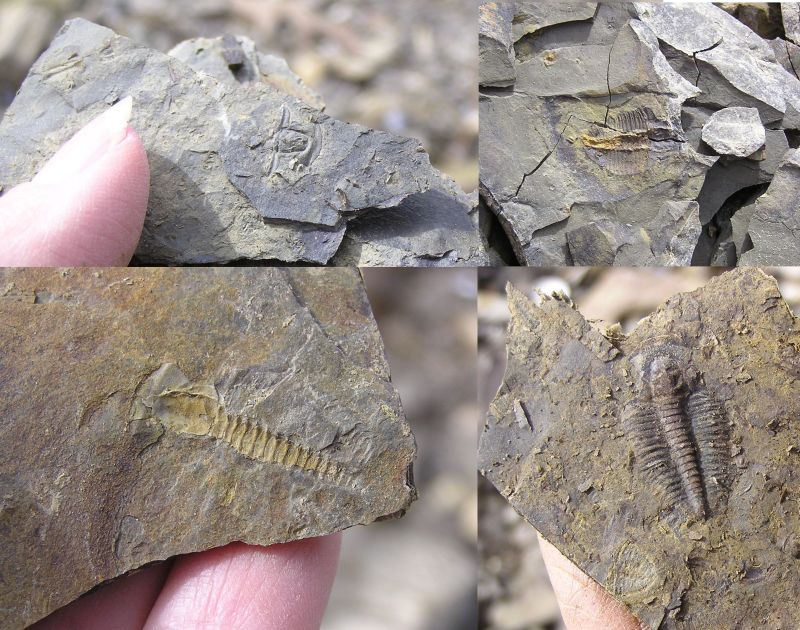
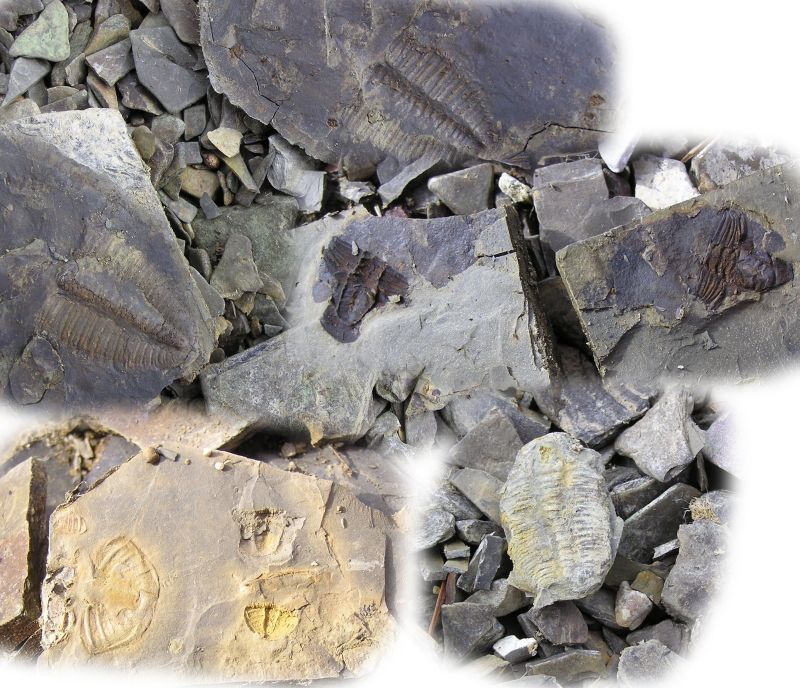
December 2, 2006 - Mississippian Fossils, St. Clair Co, AL
--Edited by Vicki Lais
(Photos courtesy Becky Guthrie and Vicki Lais)
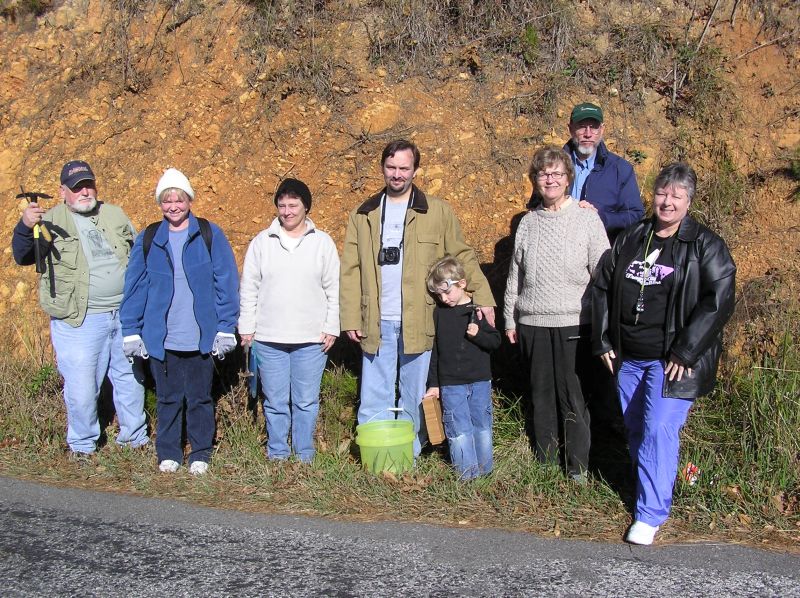
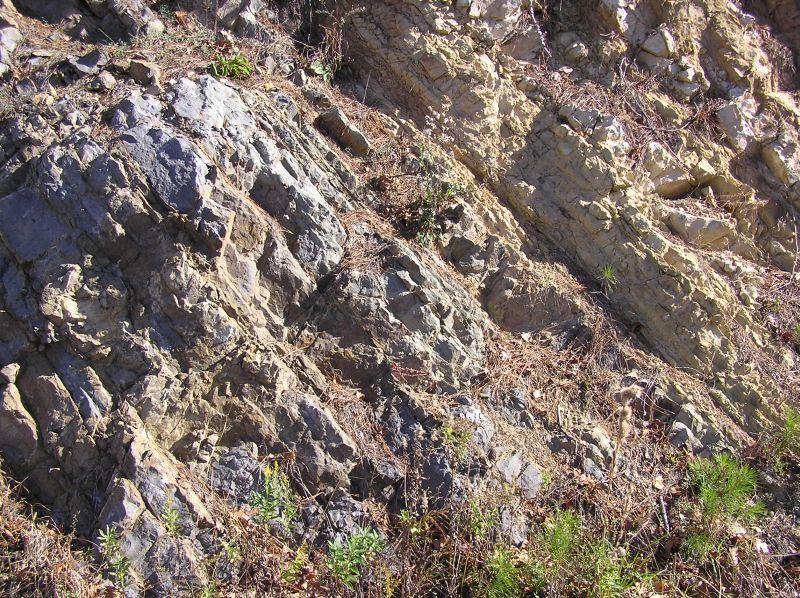
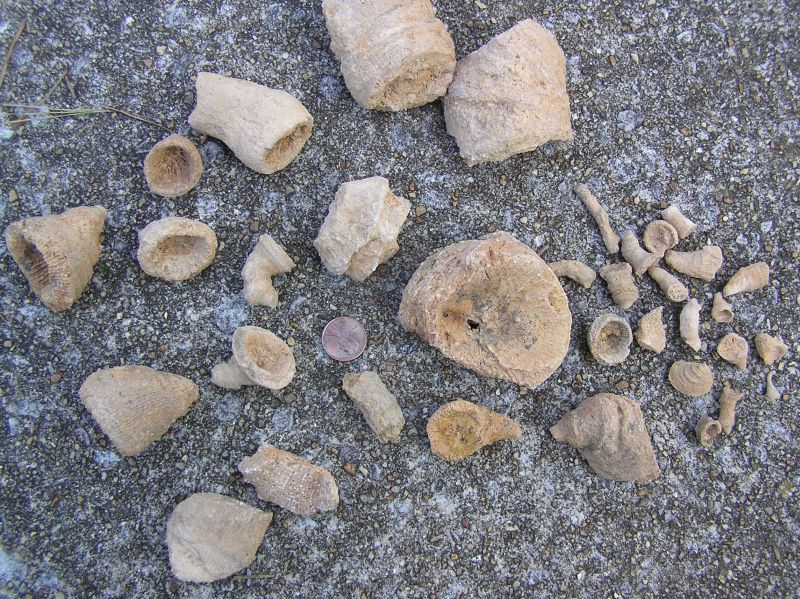
The most common fossil at this location is coral.
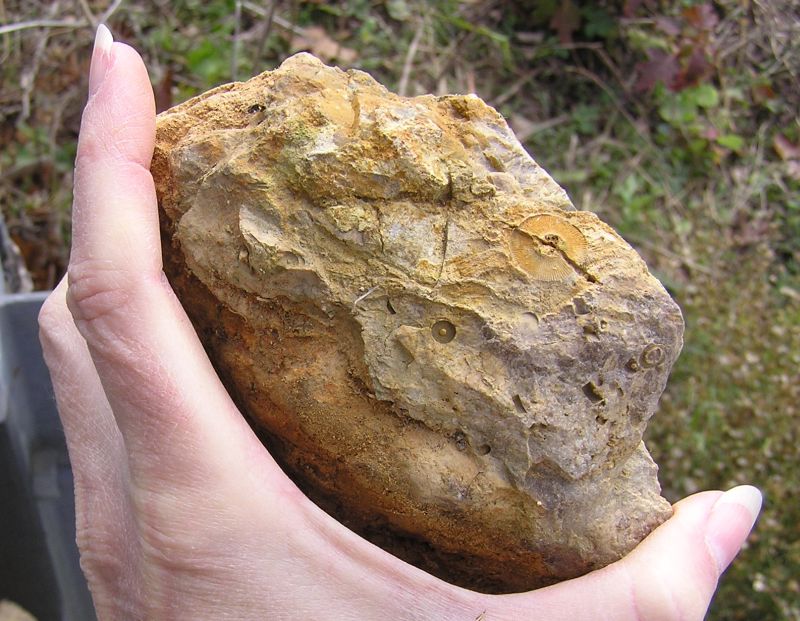
Crinoids are also found.
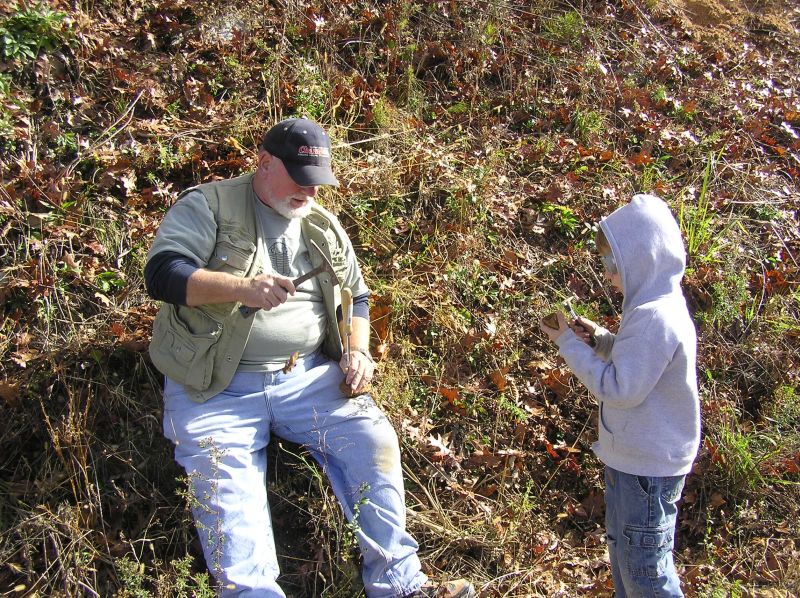
Greg shows Nathan how to crack the rocks to find the fossils inside.
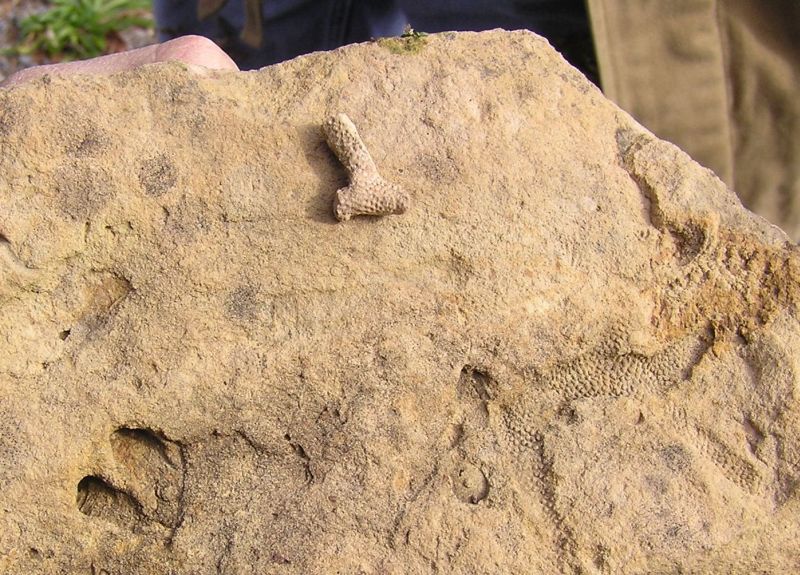
Nice bryozoan impression and actual fossil remains.
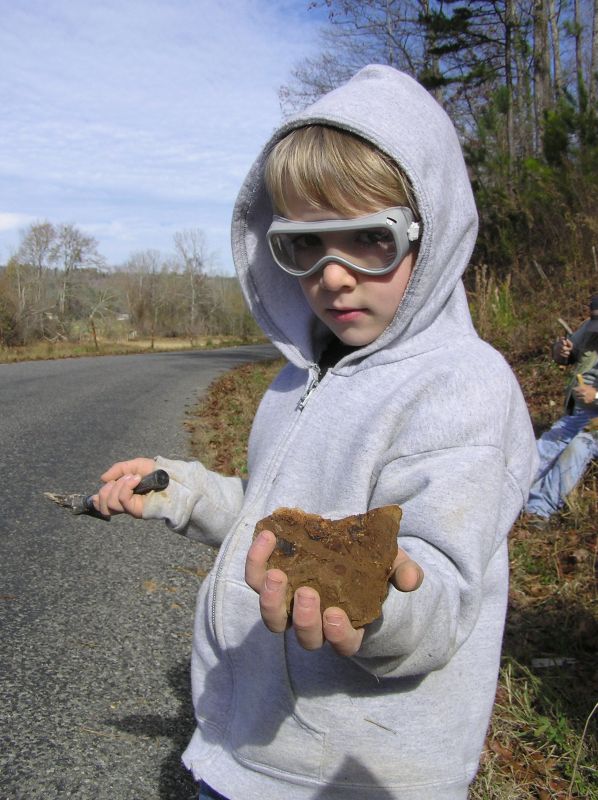
Nathan has found fossil brachiopods. Click picture for closer view.
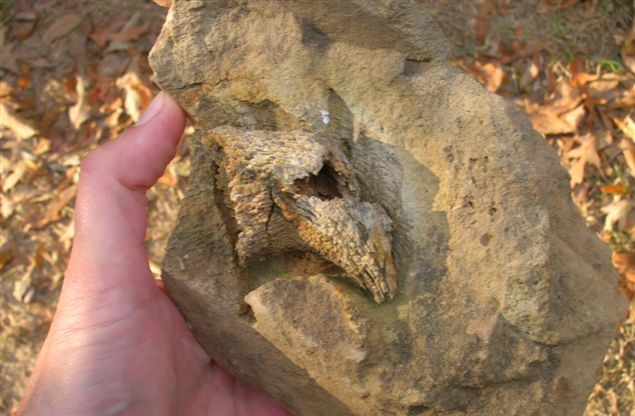
An interesting piece of horned coral, laying loose in a hollow shaped like it. This specimen has obviously been weathering in this same location for many years.
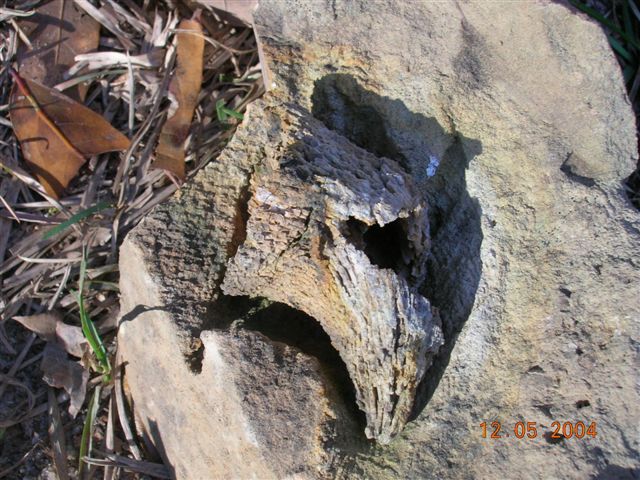
Another view of the horned coral.
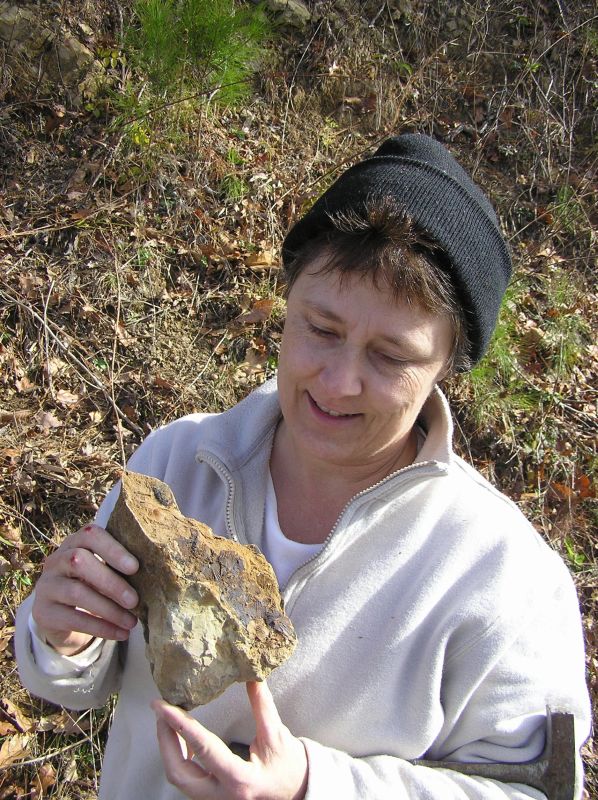
Becky also has a nice slab of brachiopods.
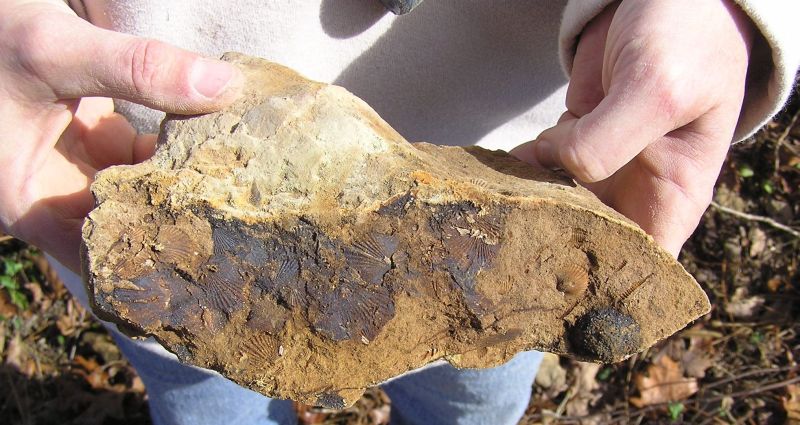
A closer look at Becky's slab.
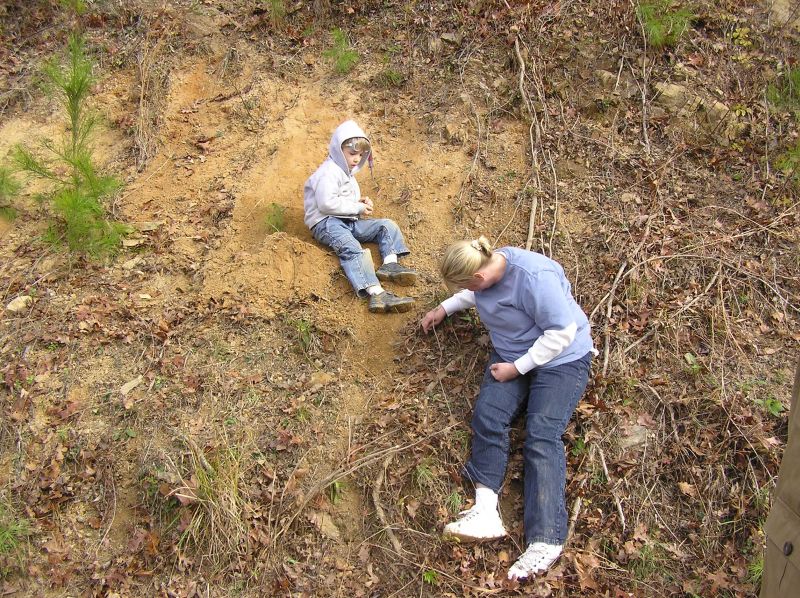
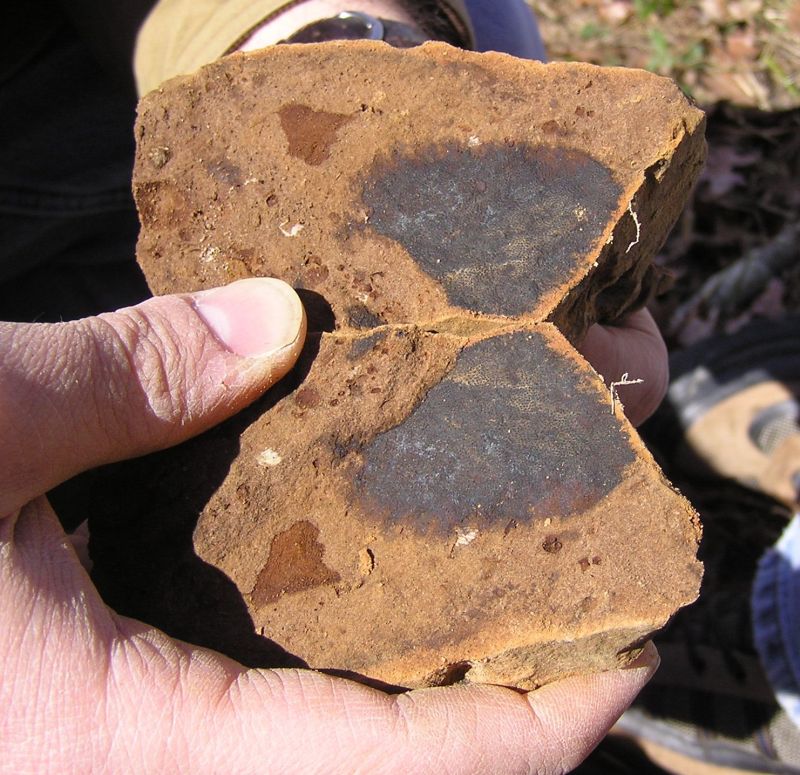
Nice sponge; at higher resolution, the pores are easily visible.
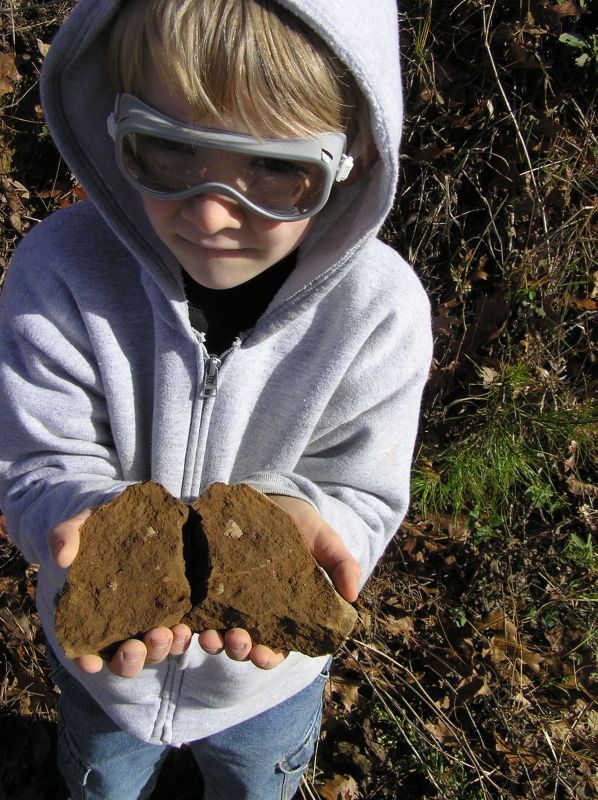
More brachiopods.
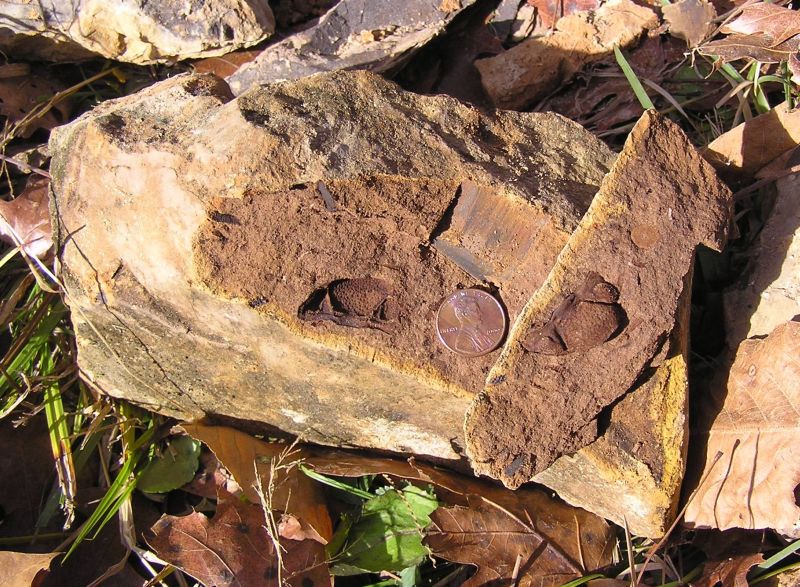
And here's what we were hoping to find - trilobites!
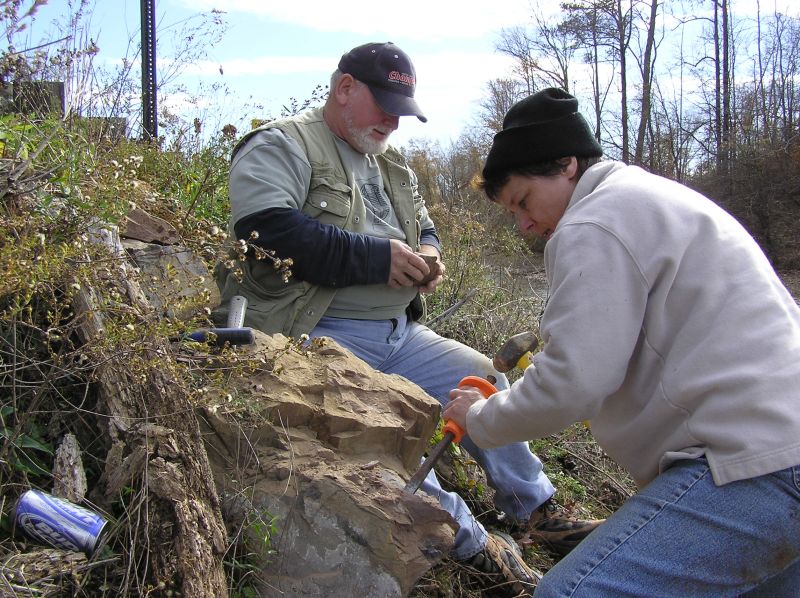
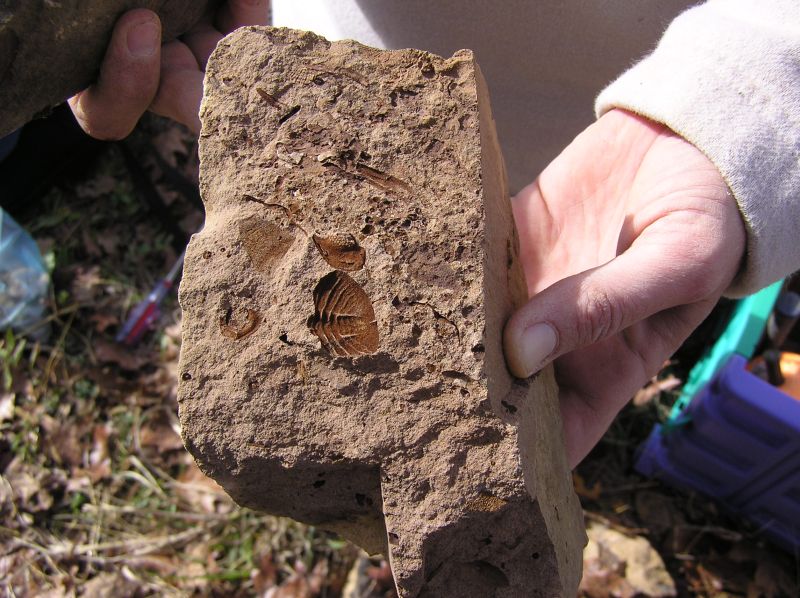
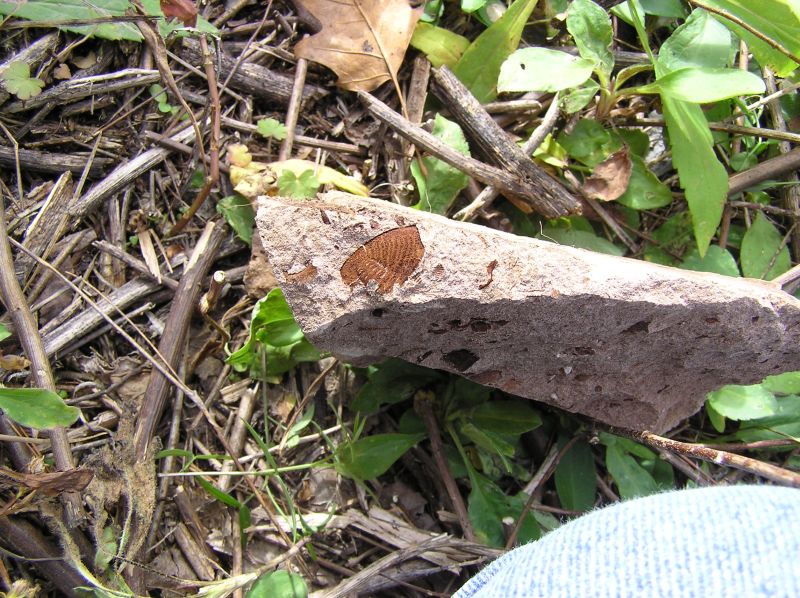
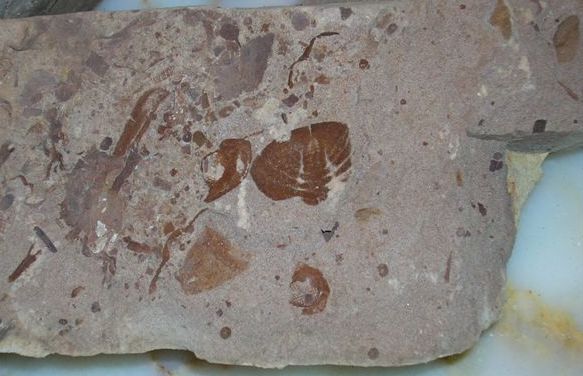
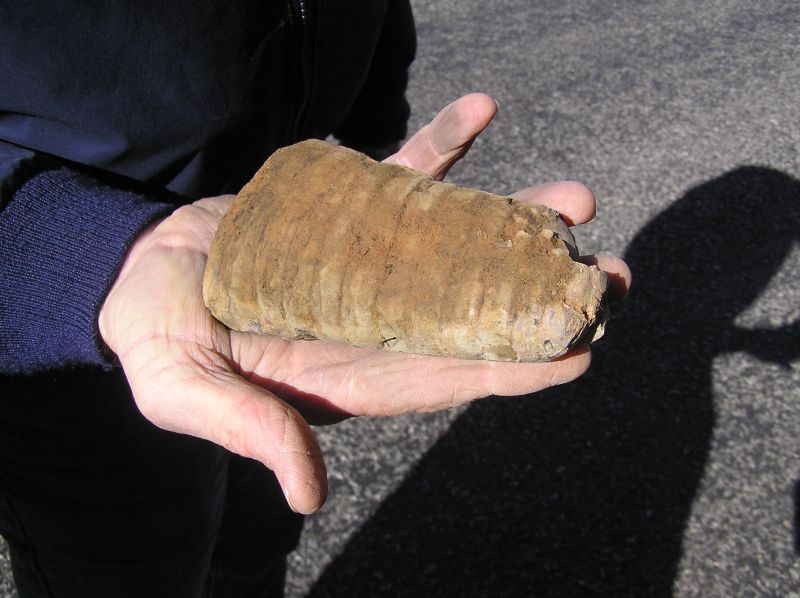
As nice as the trilobites are, this straight cephalopod was the find of the day!
October 28, 2006 - Mississippian Fossils, Blount Co, AL
After the butterfly viewing, we then convoyed to a quarry of Mississippian age Fort Payne chert where we had permission to hunt the whole day! Doesn't get much better than this, and the weather was absolutely perfect! Along with more large crinoid stems, several kinds of coral, brachiopods and a few trilobite pieces were found. Quite a few of us found beautiful geodes and concluded that this is just about as exciting as the fossils. They certainly are gorgeous souvenirs.
Later in the afternoon, a few of us sneaked off to one of Greg's barbecue spots and chowed down on some excellent vittles while our more dedicated crew-members devoted themselves to the task at hand. Well, you can't have everything. Sometimes a blackberry cobbler just has your name on it.
--Edited by Vicki Lais
(pictures courtesy Bill Fowler and Vicki Lais)
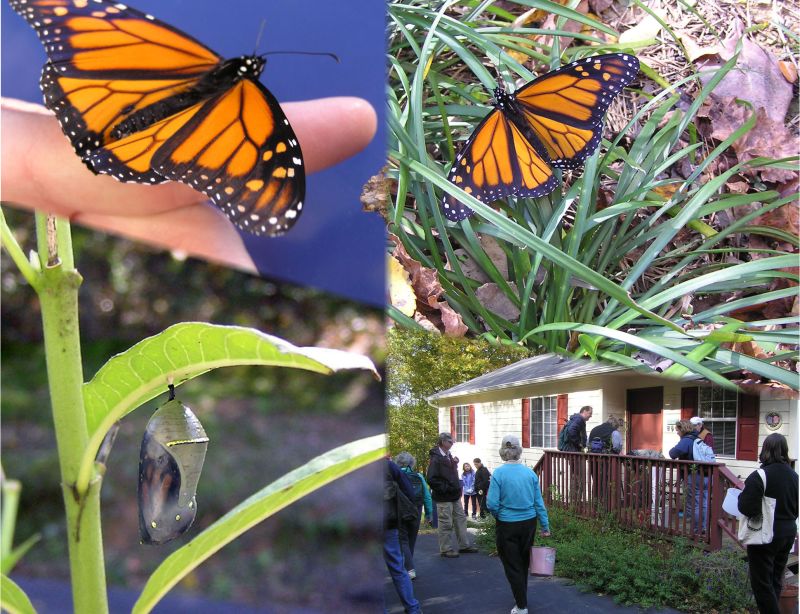
Our first stop of the day, where we found Monarch chrysalis on numerous surfaces, including plants and house siding. This chrysalis has turned clear, and you can see the butterfly inside. There were several newly emerged Monarch butterflies slowly pumping their wings, waiting for them to harden (that's what everyone's staring at on the porch.)
We had a great turnout and beautiful weather; here we pose for a group picture before setting off on our day's adventure.
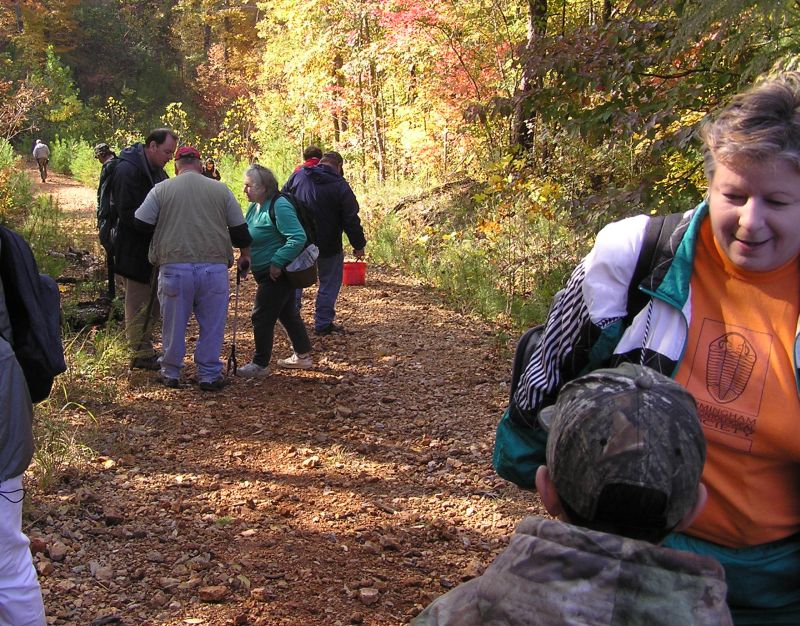
The first fossil stop, a gravel road paved with chert from the Mississippian age. Almost all the rocks have crinoid stems or impressions in them.
Examining recent finds.
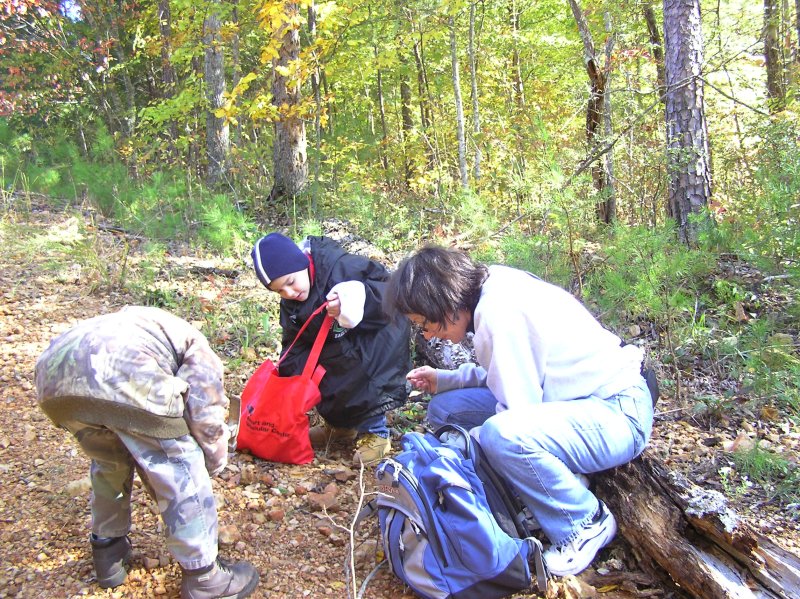
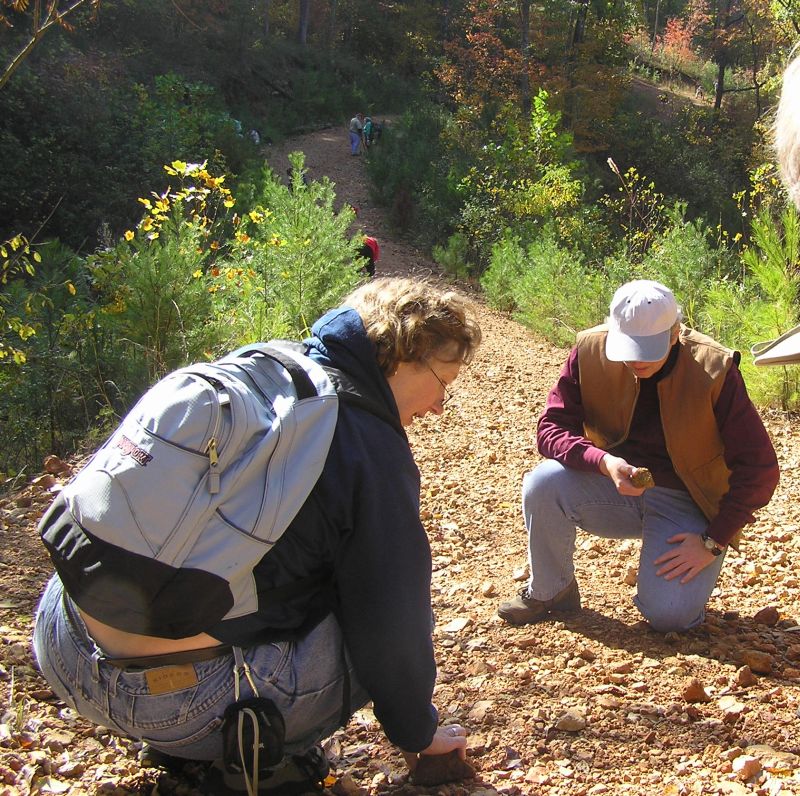
Samples of fossils found today.
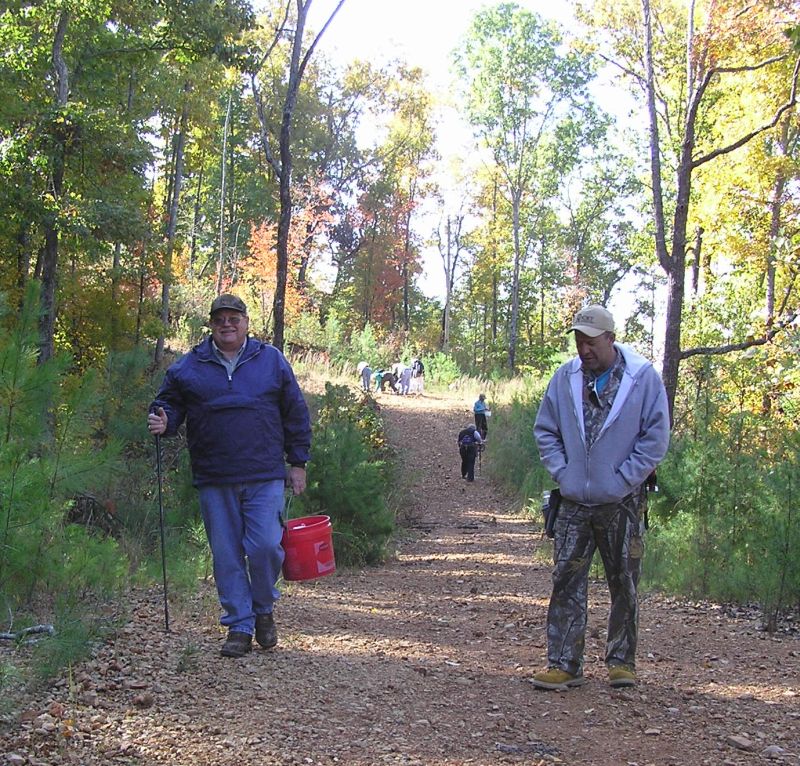
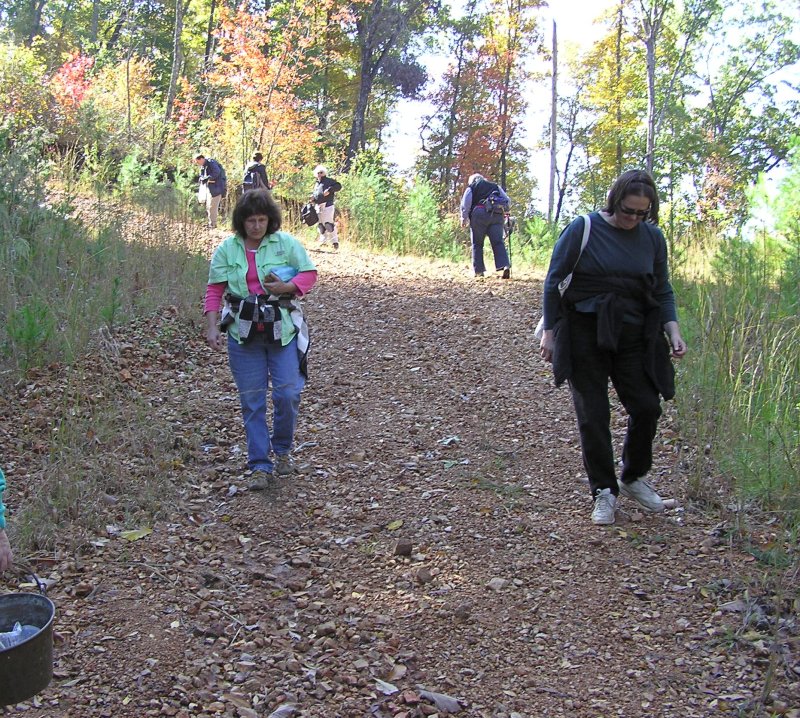
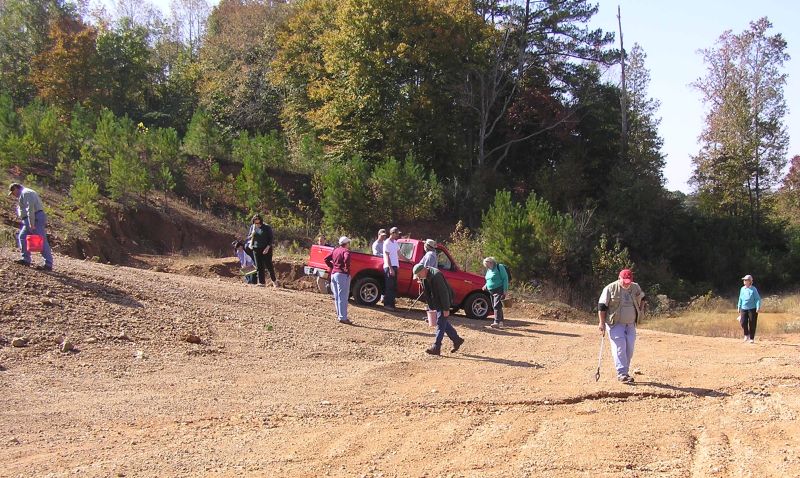
On to the next stop at a nearby quarry which was large, hilly and had multiple collecting areas. Everyone scattered in different directions to collect, so it was difficult to get closeups of people and their finds during the day.
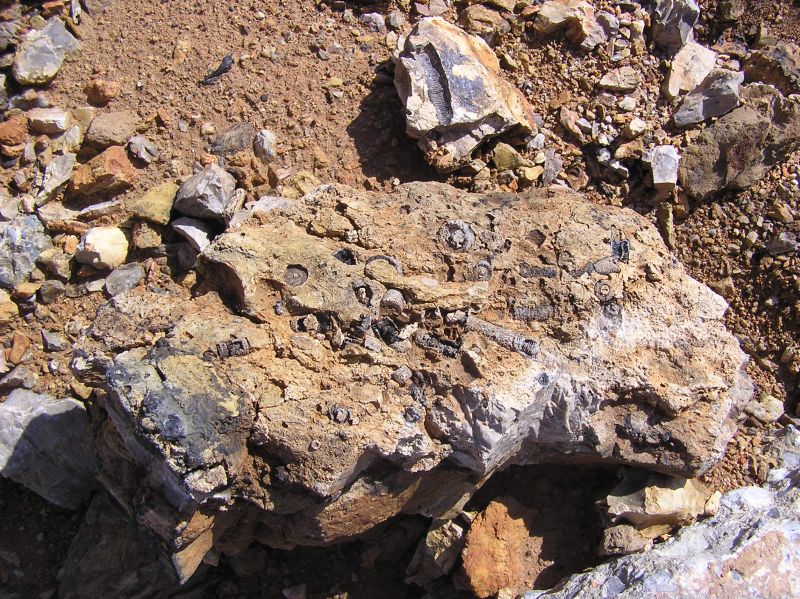
Crinoid stems in matrix.
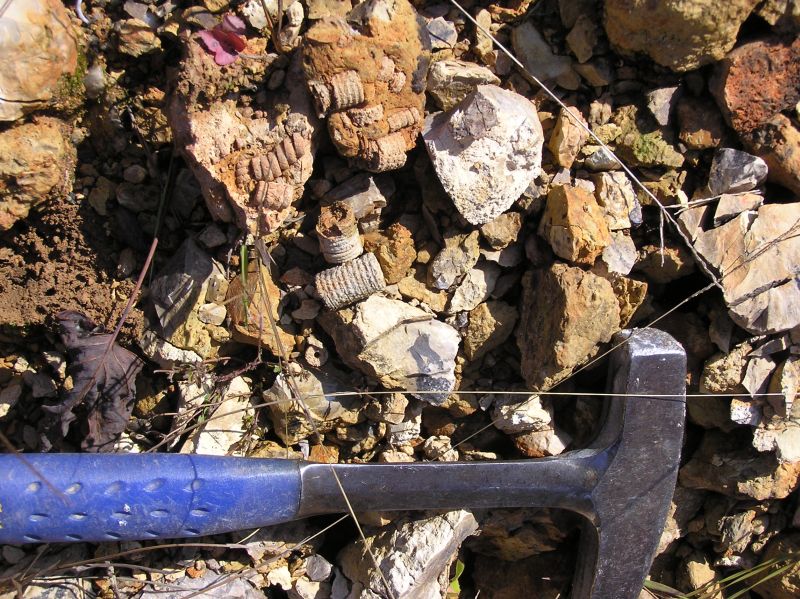
Crinoid stems.
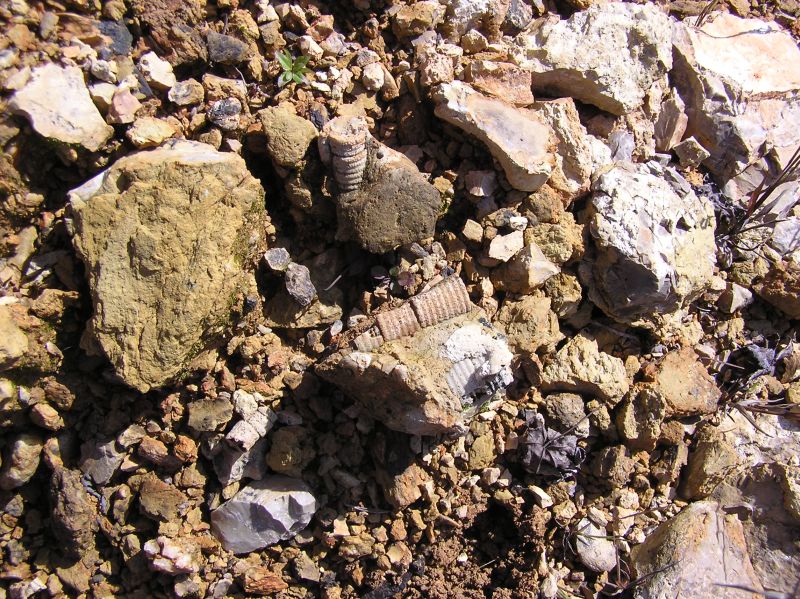
Crinoid stems. Click picture for closer view.
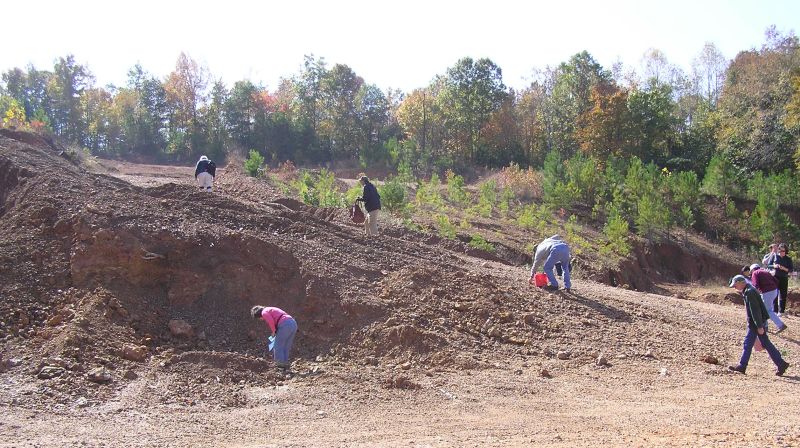
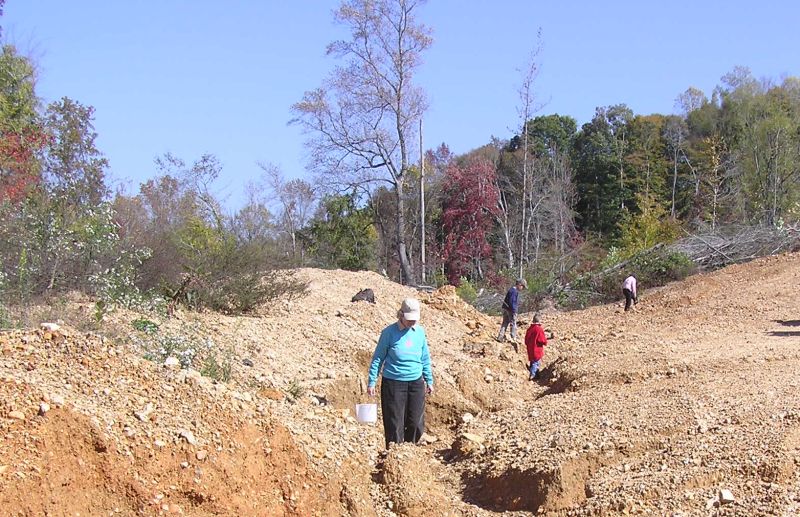
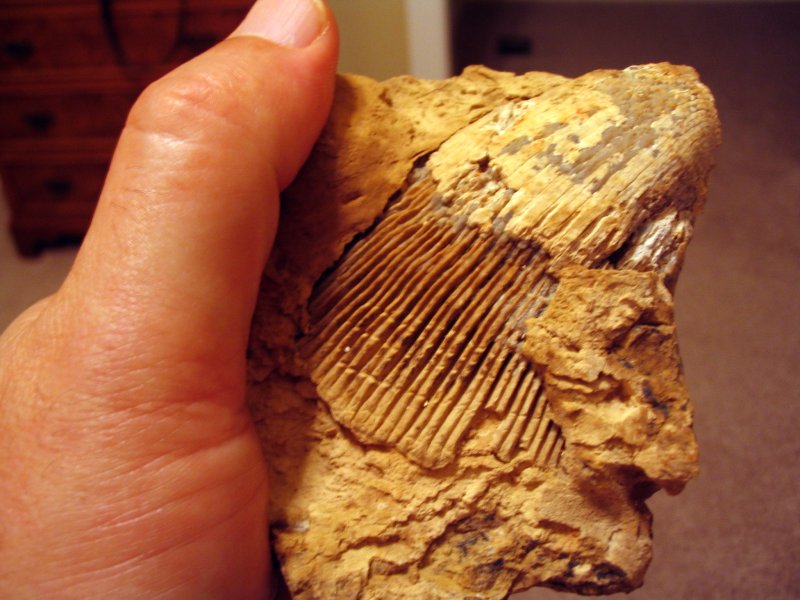
Horned coral found by Bill.
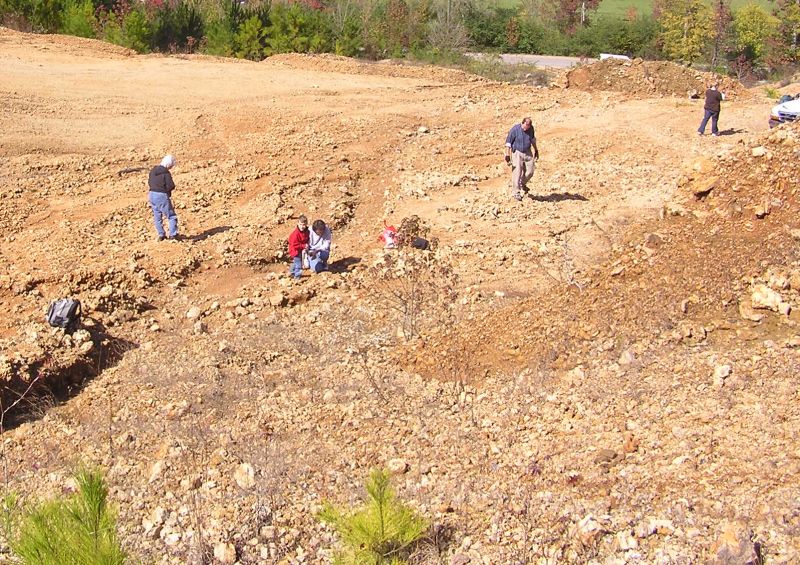
Clockwise, from upper left - unknown (possible stromatolite), possible burrow, part of a trilobite and shell, bryozoan.
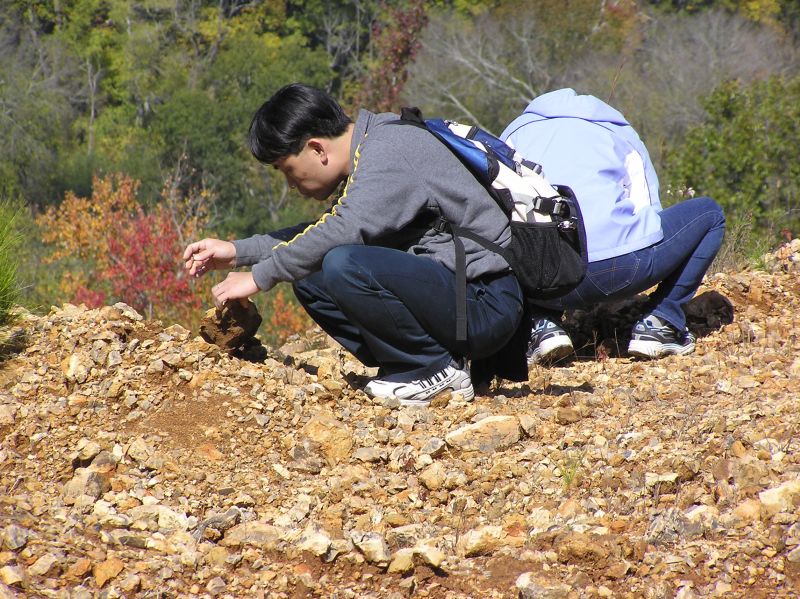
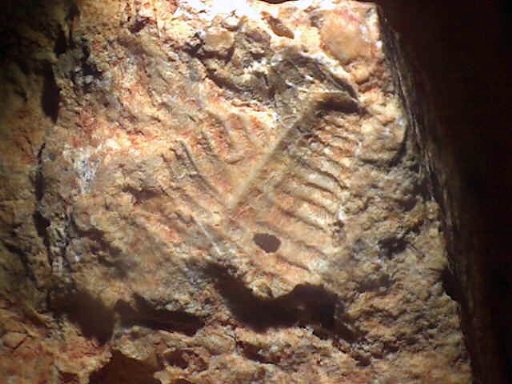
Small trilobite found by Bill, magnified.
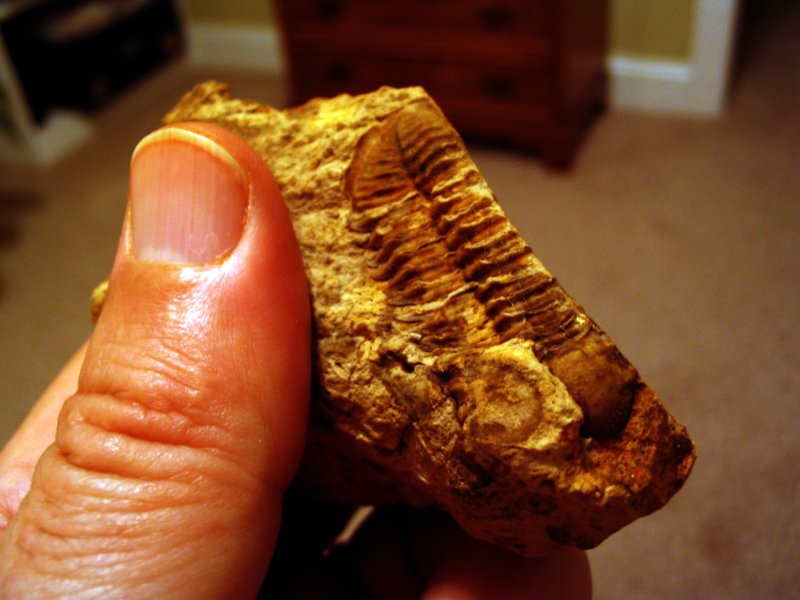
Large trilobite found by Bill. This is what we came for, he must have found their secret hiding place!
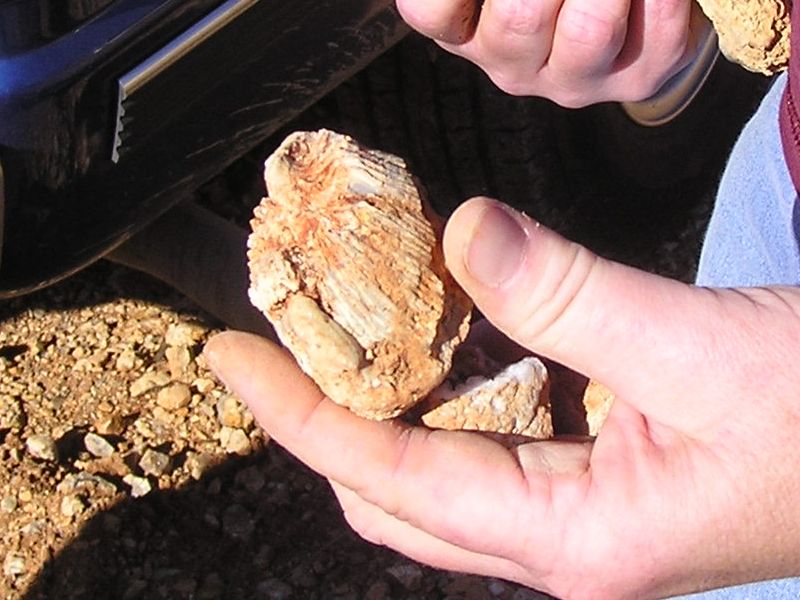
Coral.
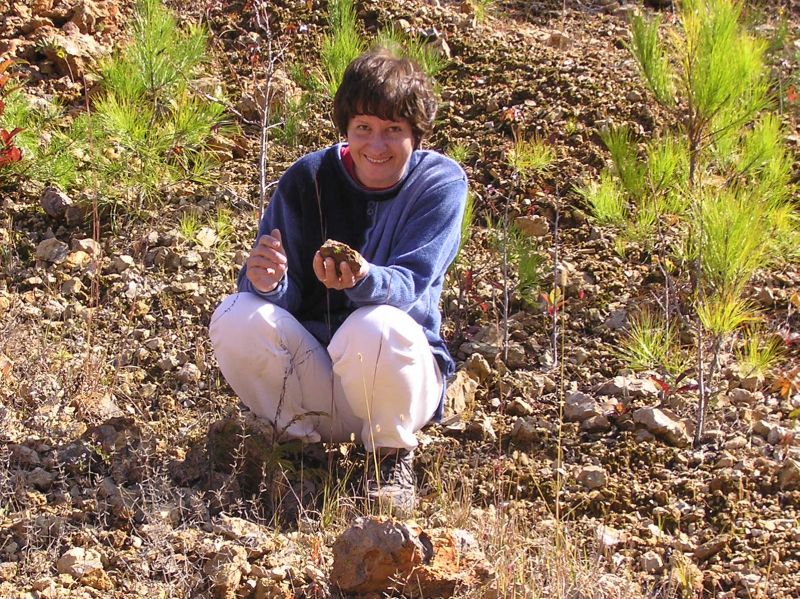
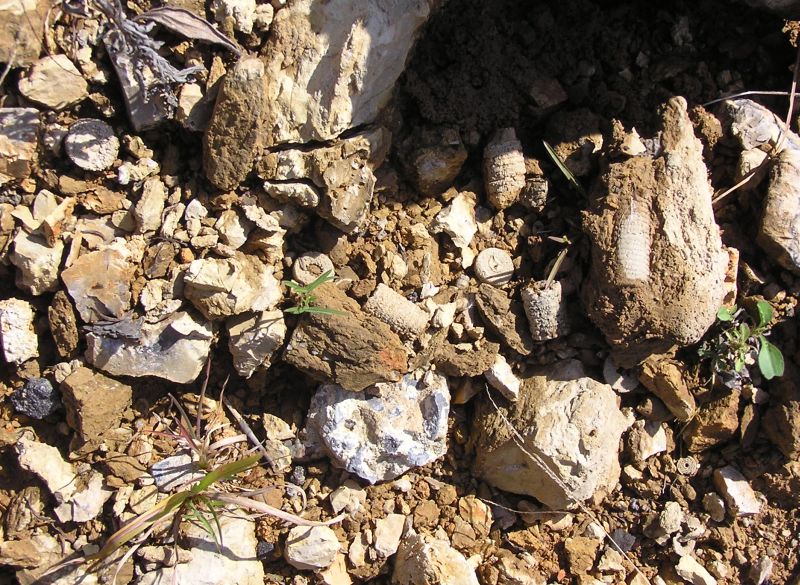
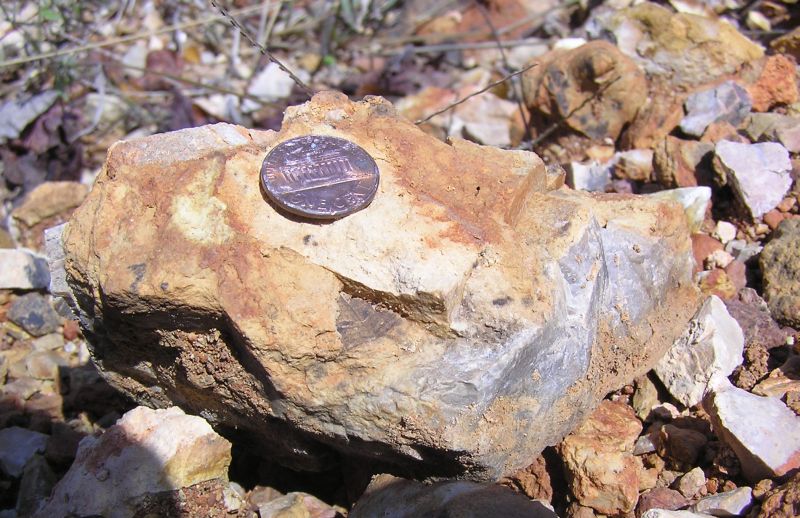
Part of a trilobite.
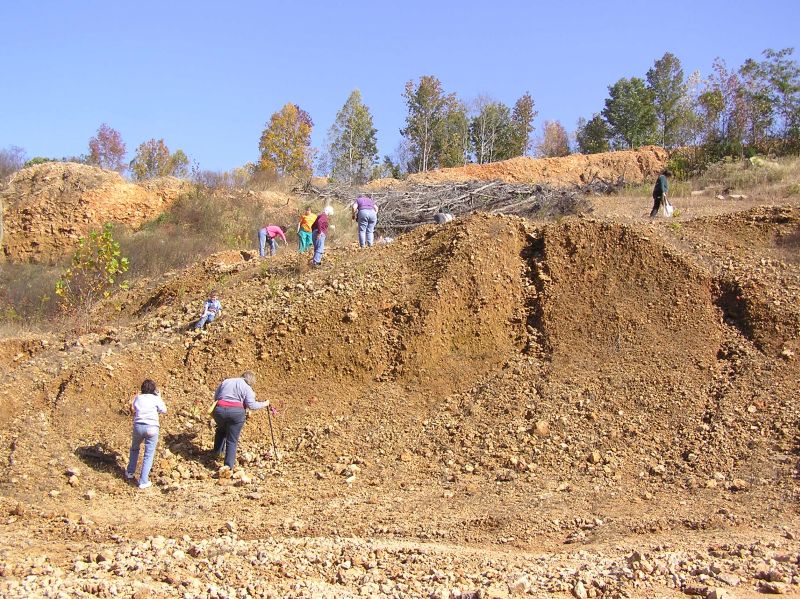
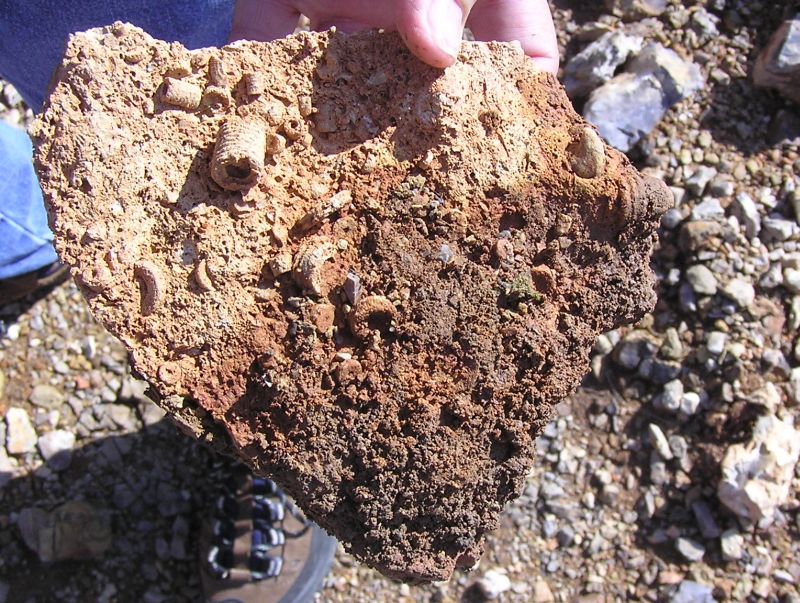
Crinoid encrusted rock.
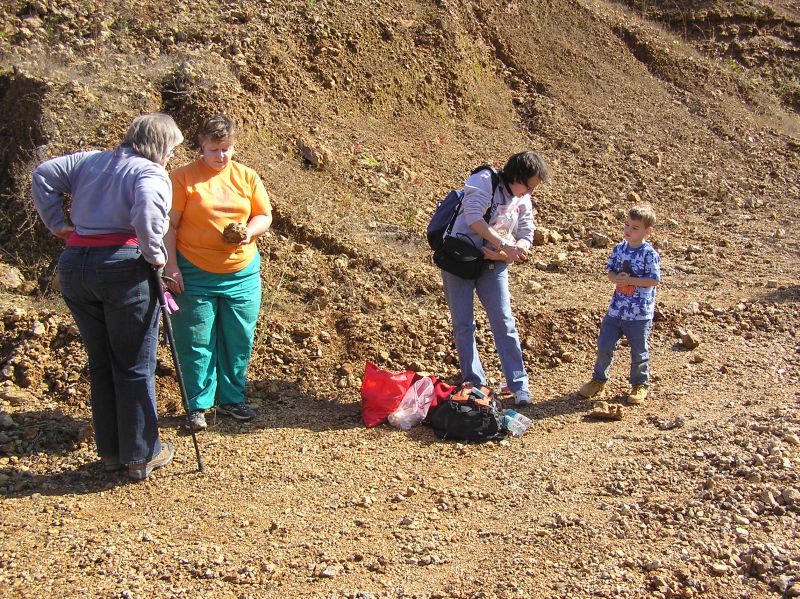
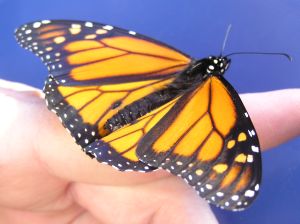
September 30, 2006 - Paleozoic Fossils and Rocks, Jefferson Co, AL, Part 2
Page 2 - Fossils and minerals (this page)
(Photos courtesy Chris and Vicki Lais)
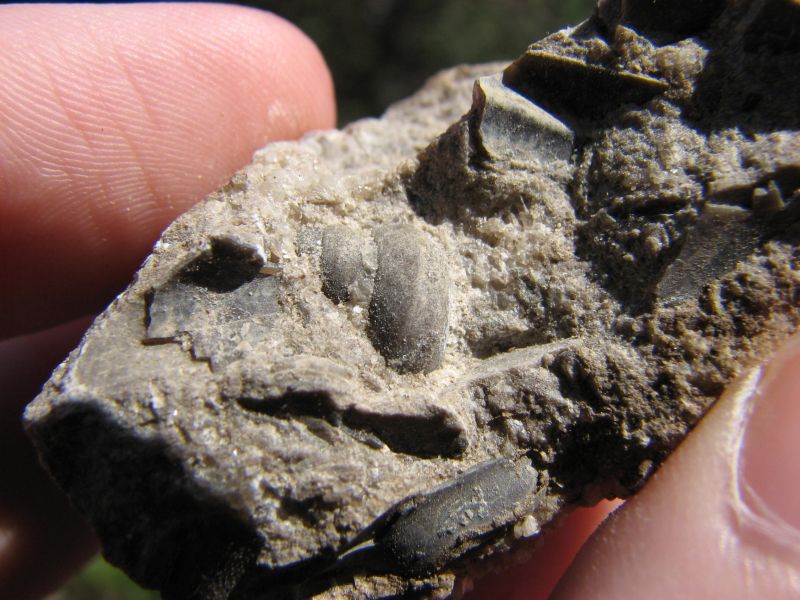
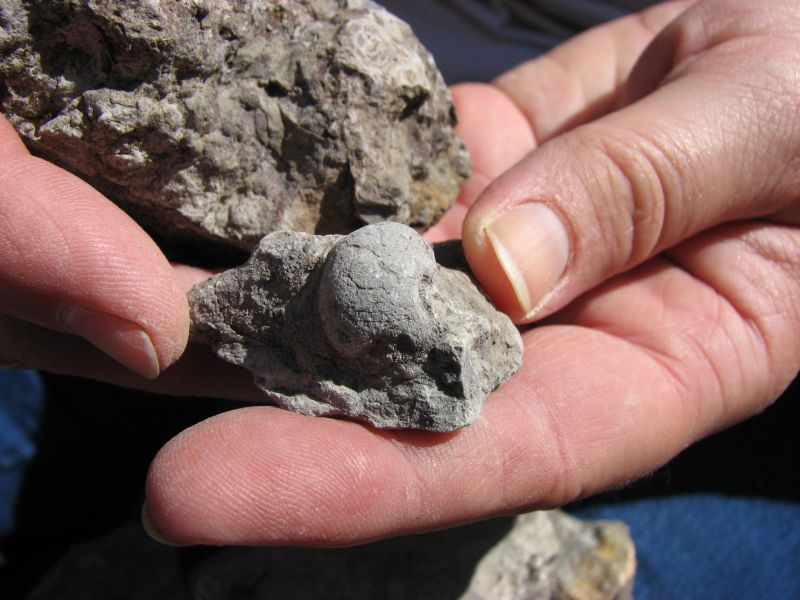
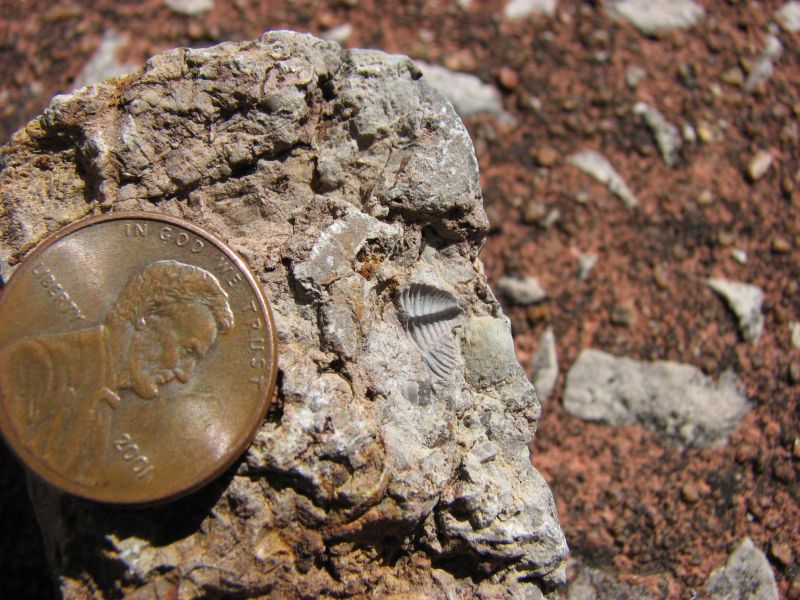
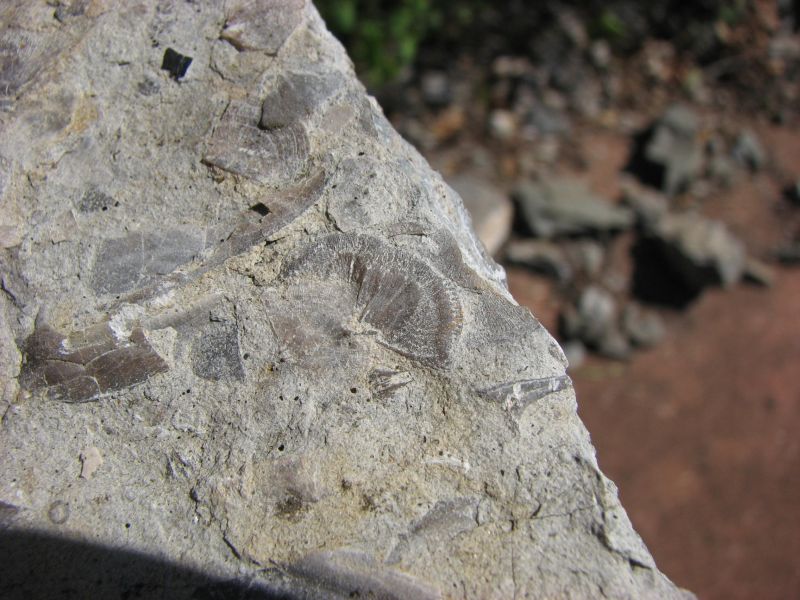
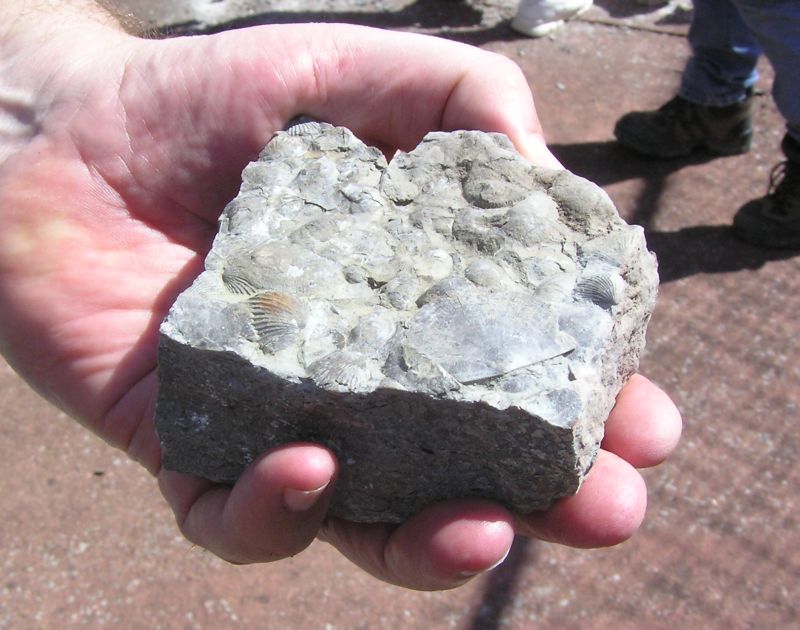
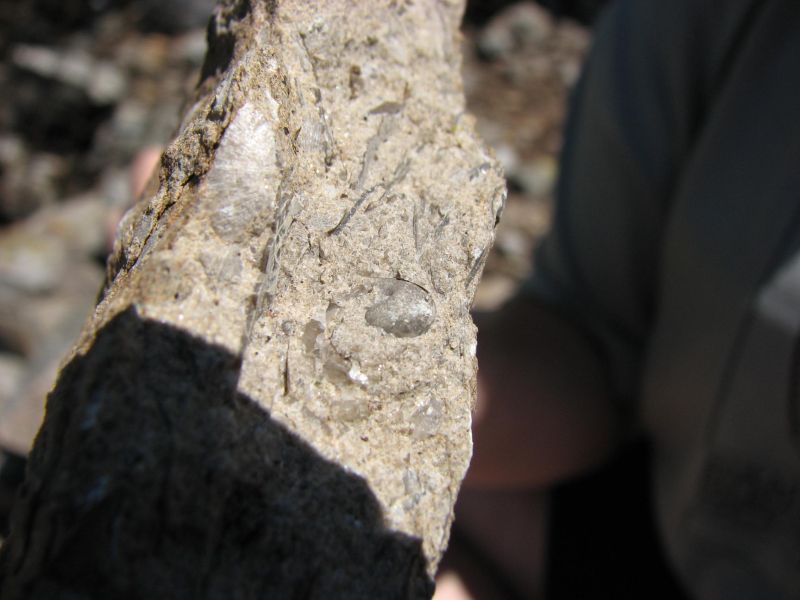
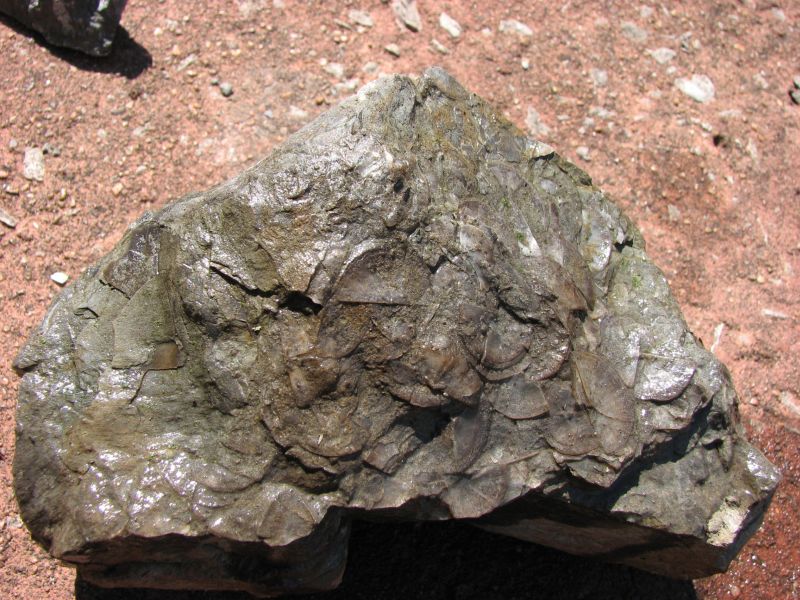
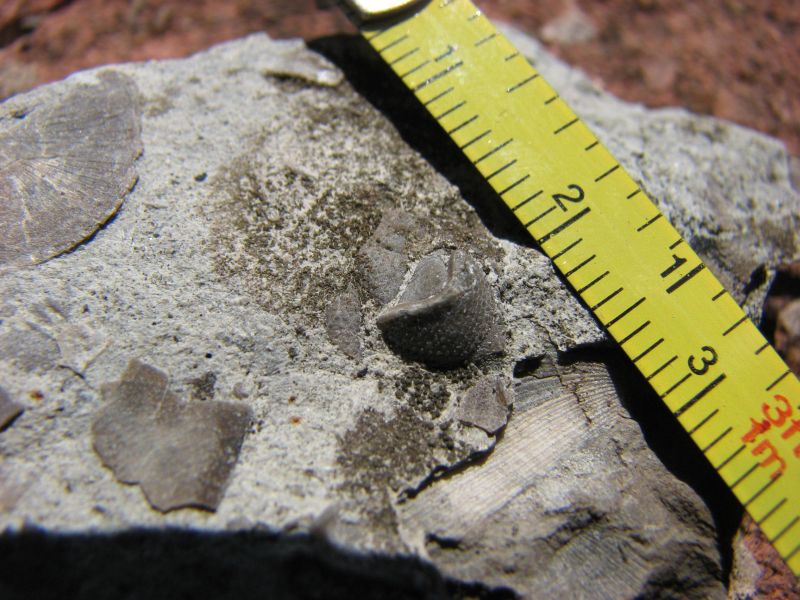
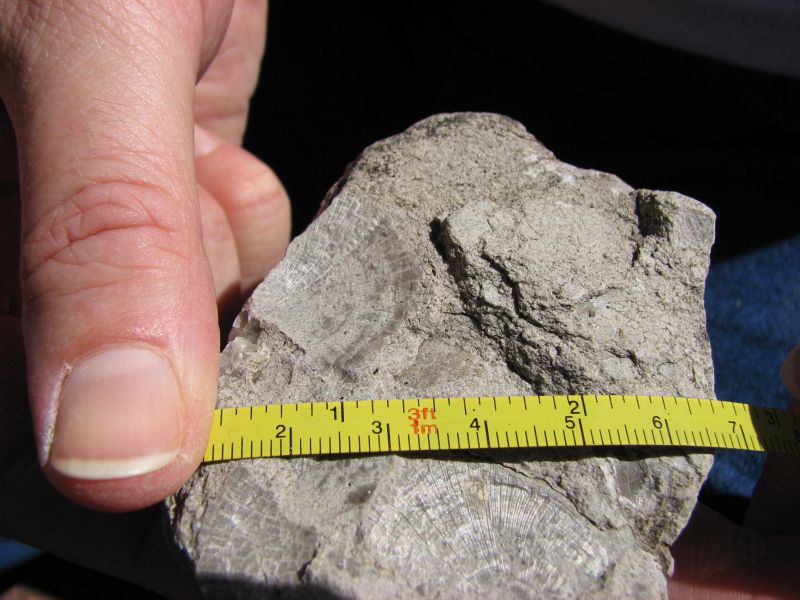
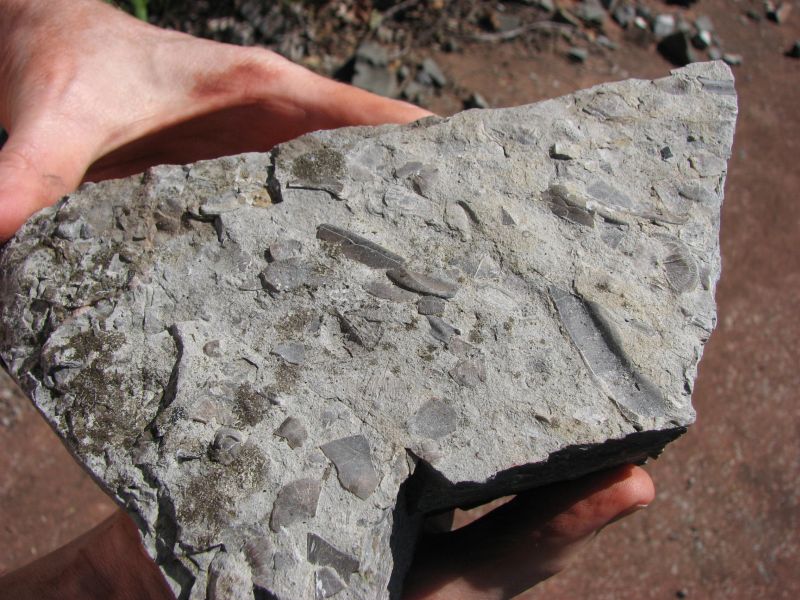
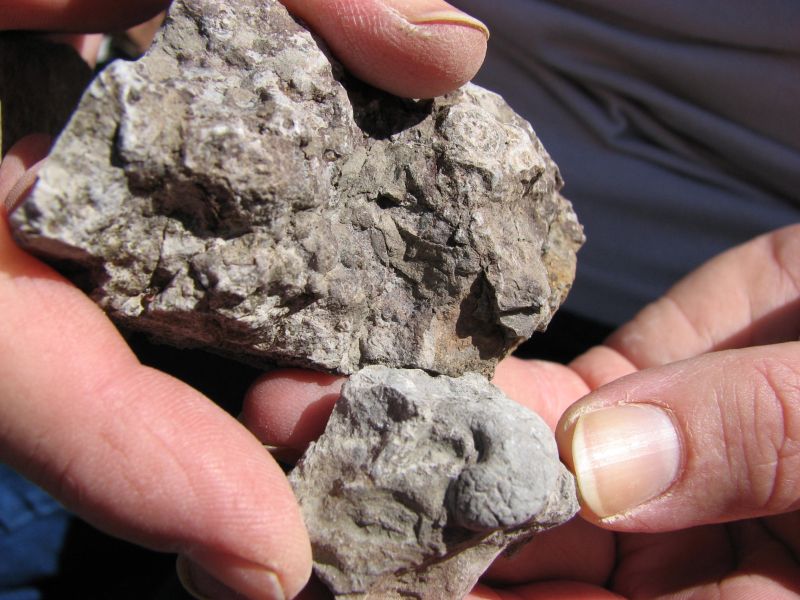
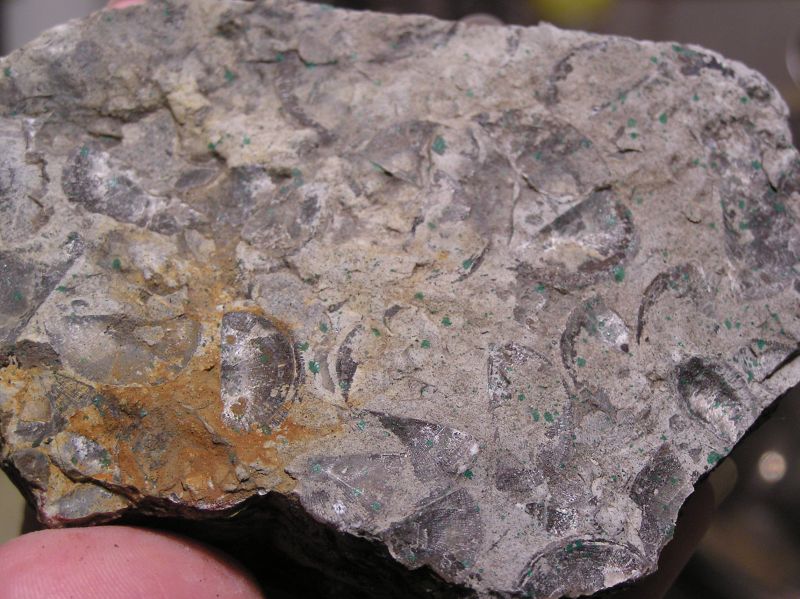
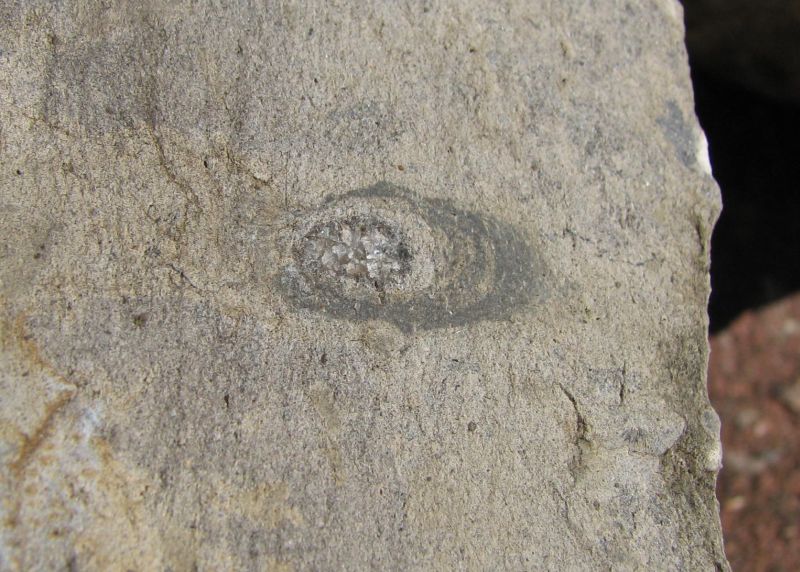
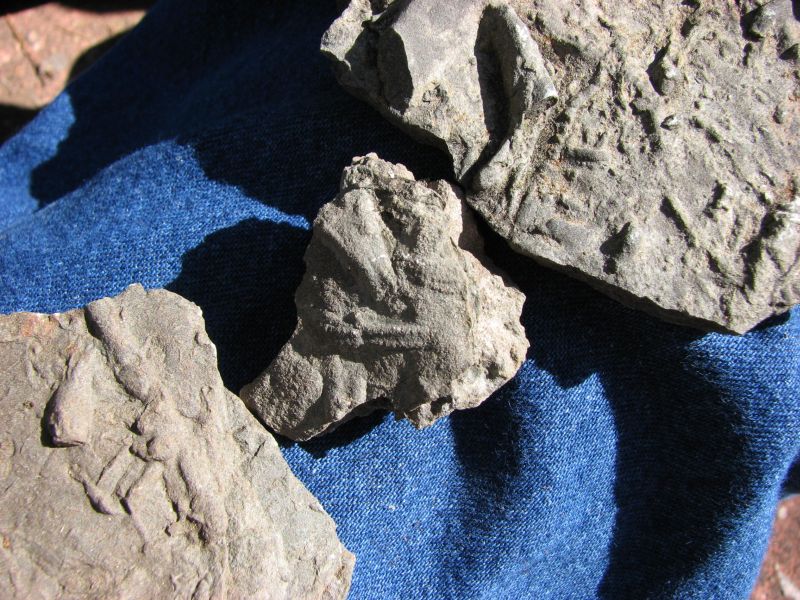
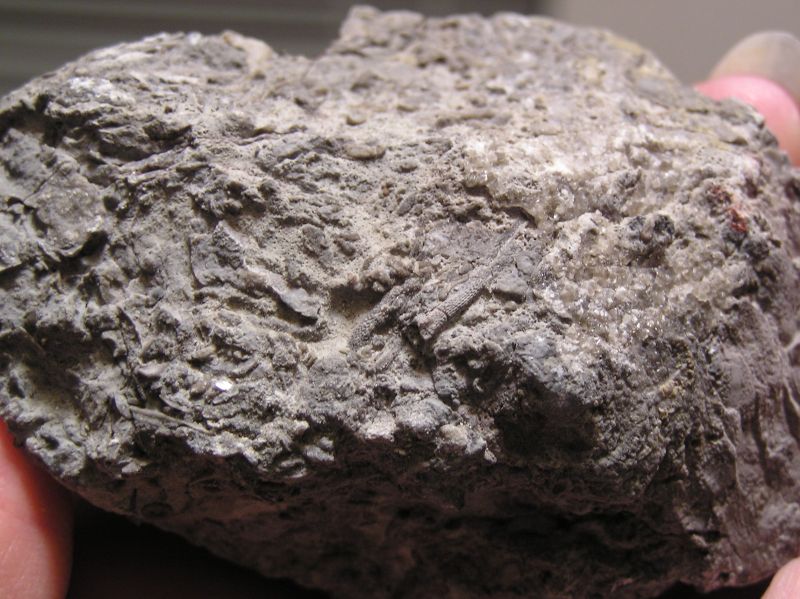
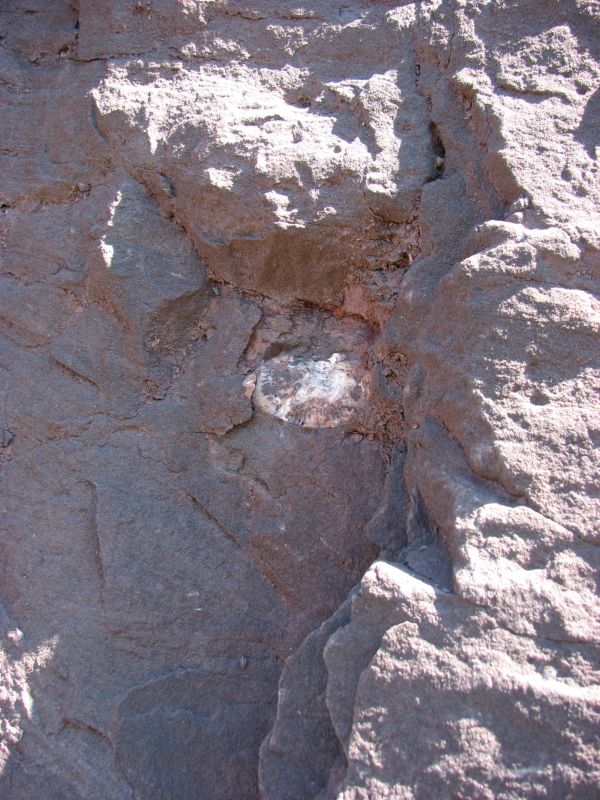
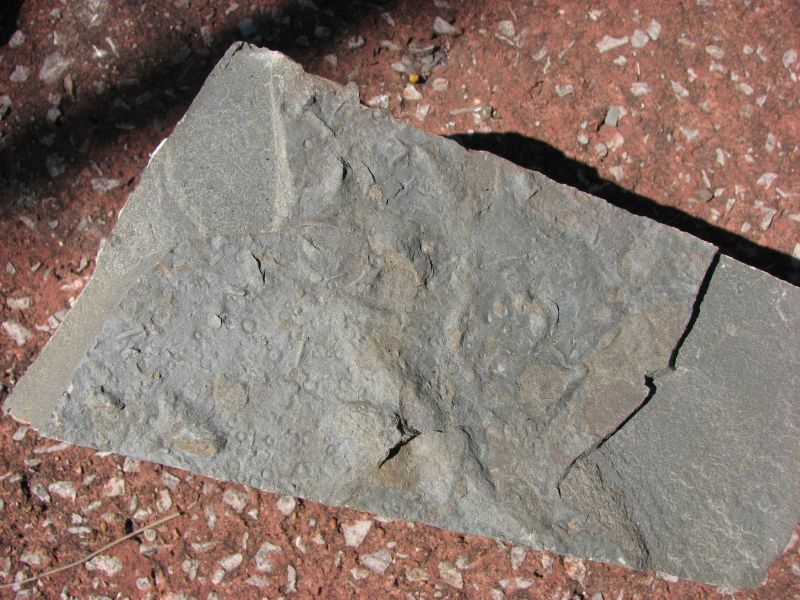
And some mineral specimens:
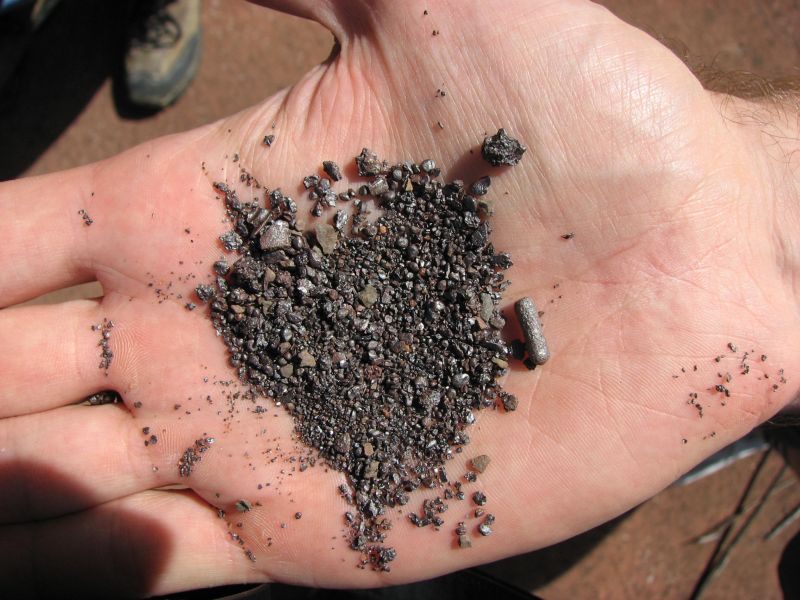
Hematite
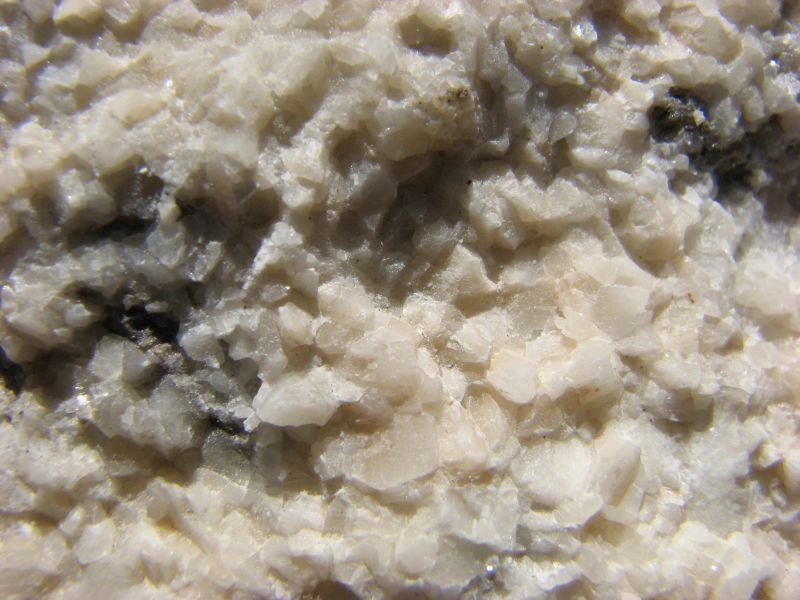
White calcite crystals.
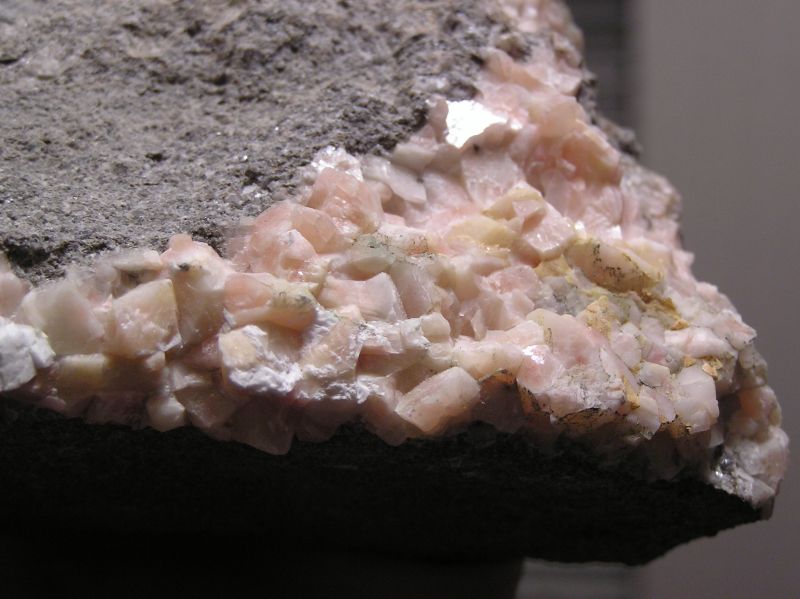
Pink calcite (dolomite) crystals.
Page 1 - General trip photos
Page 2 - Fossils and minerals (this page)

